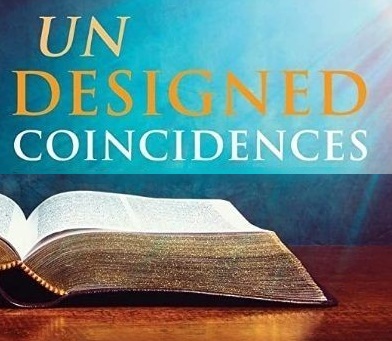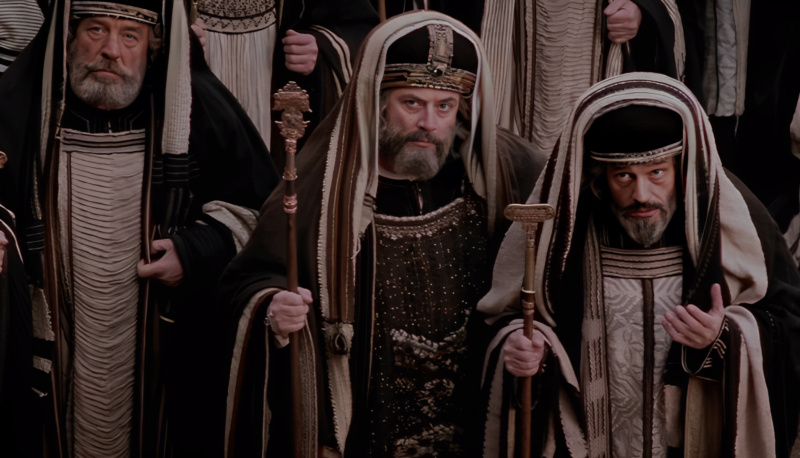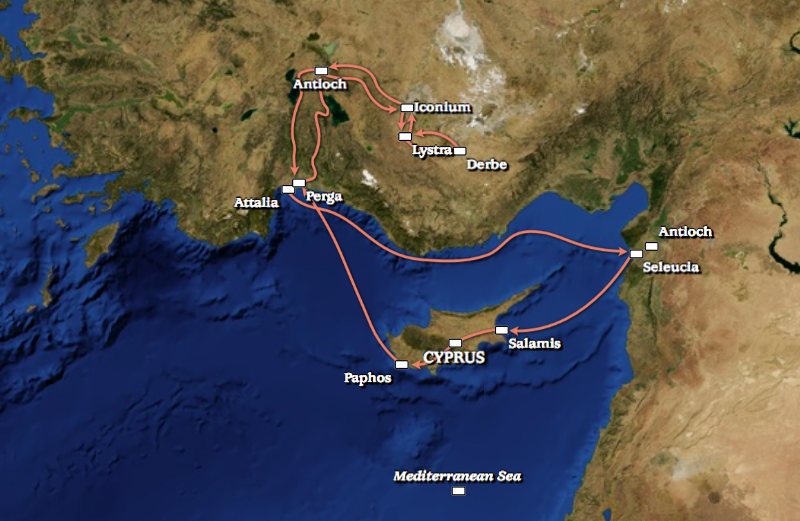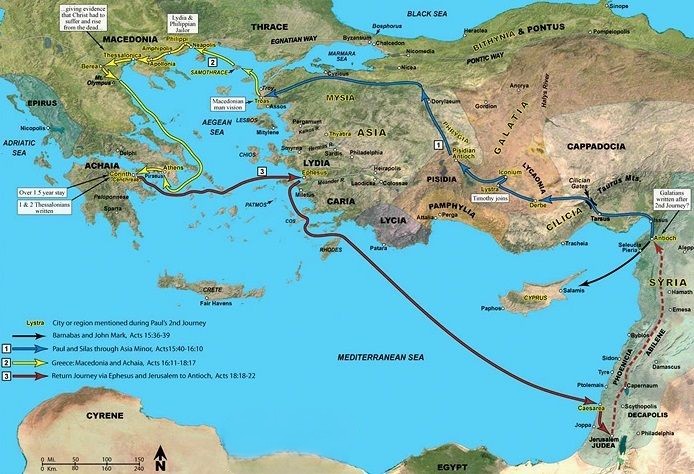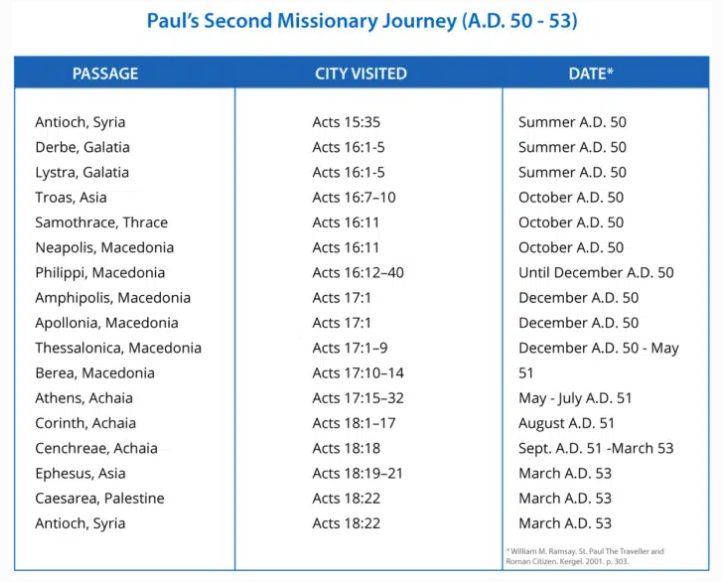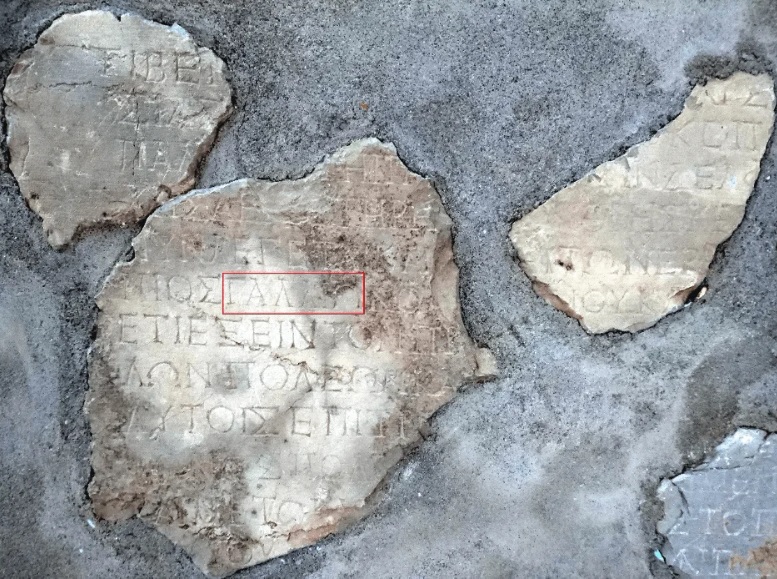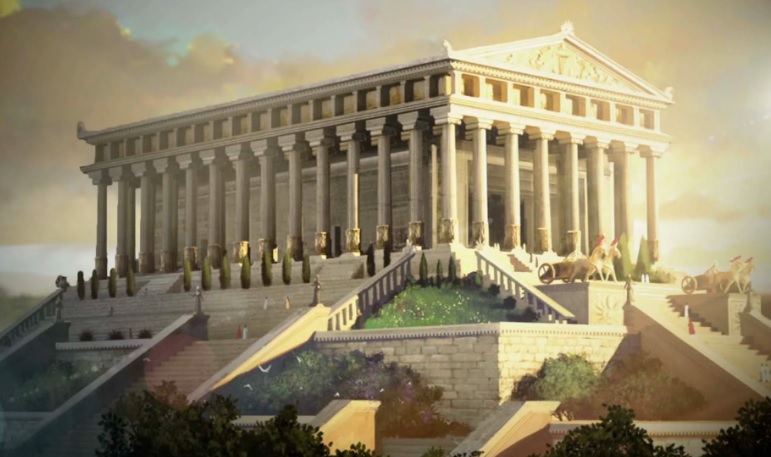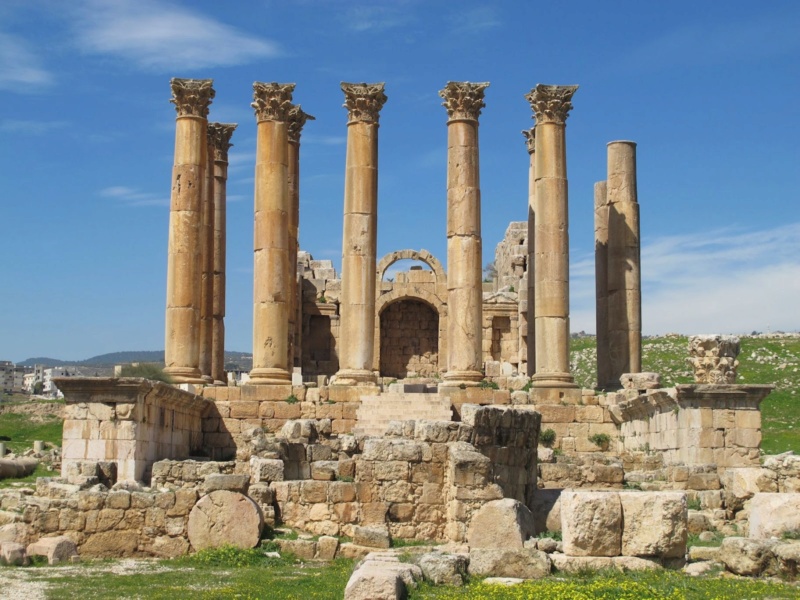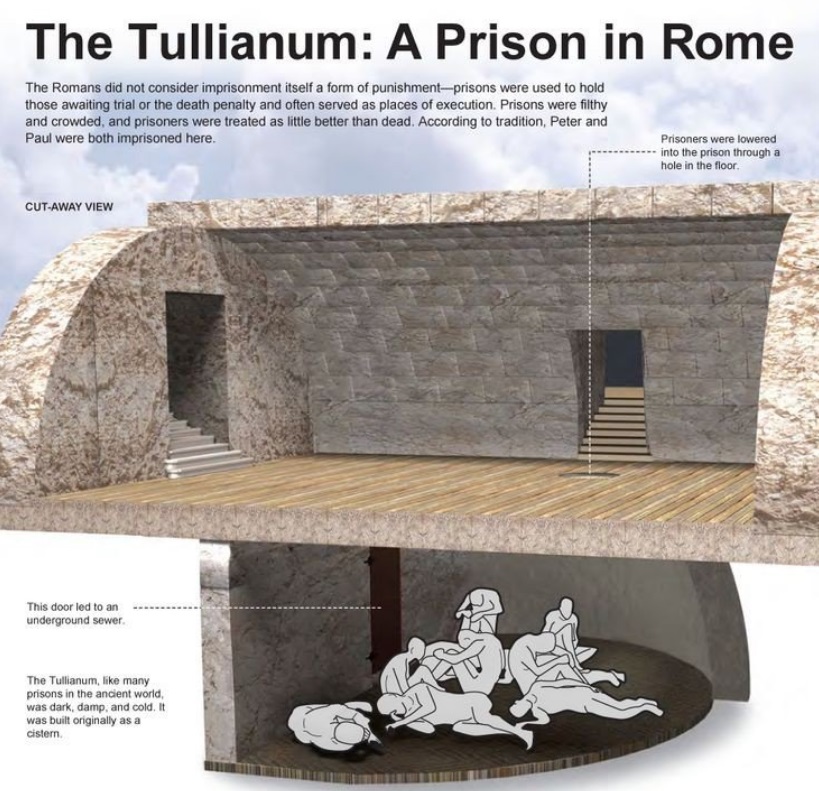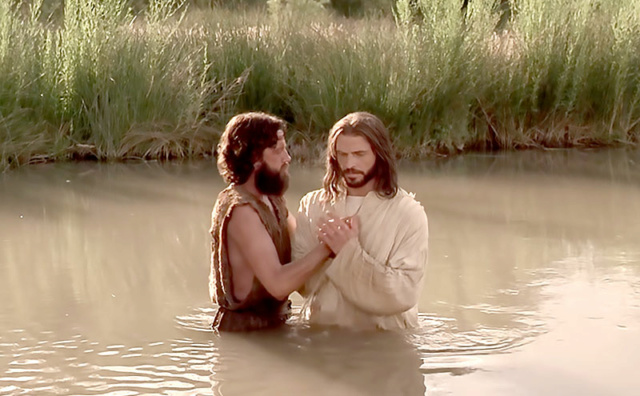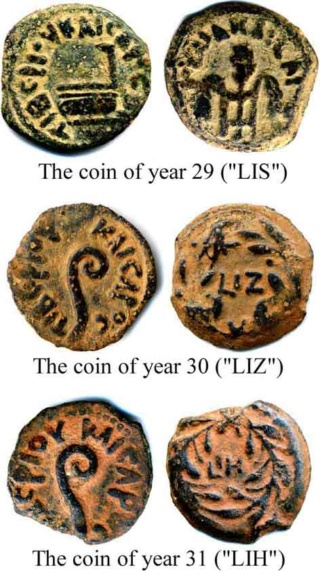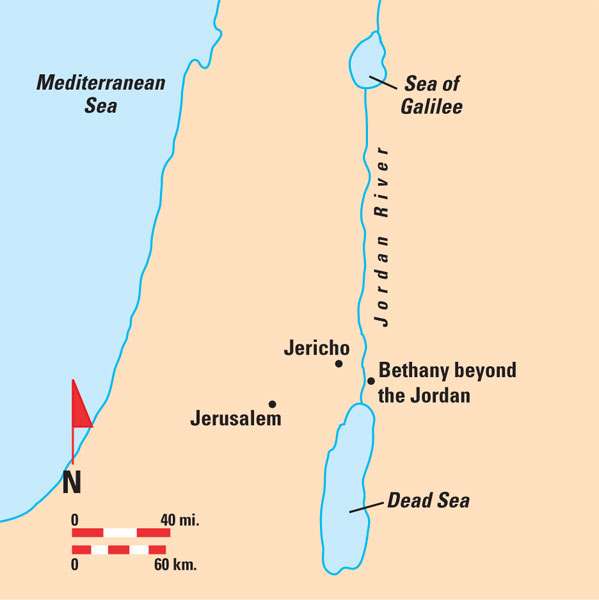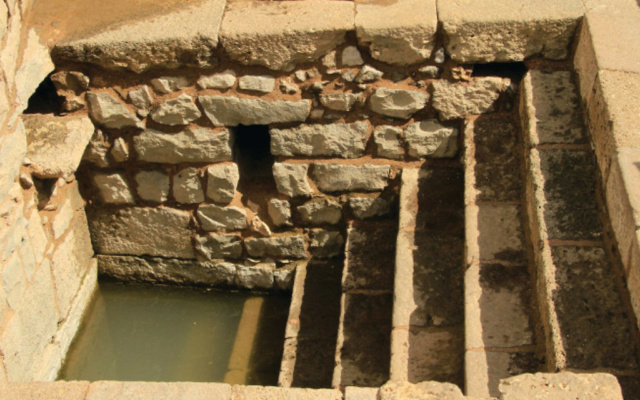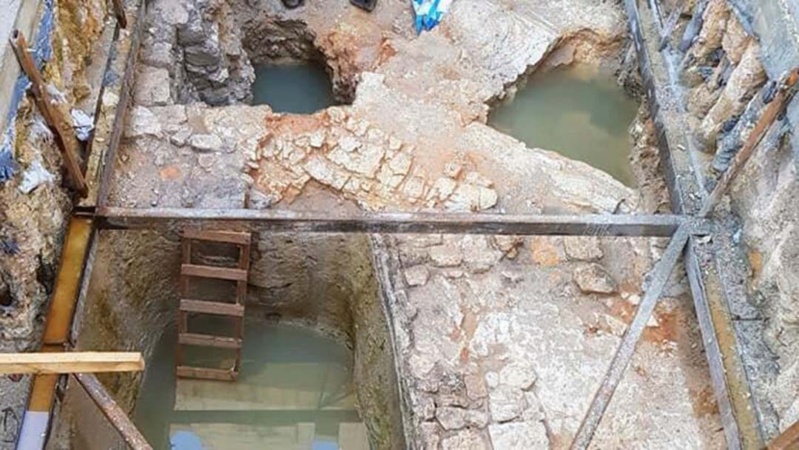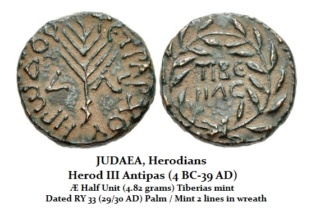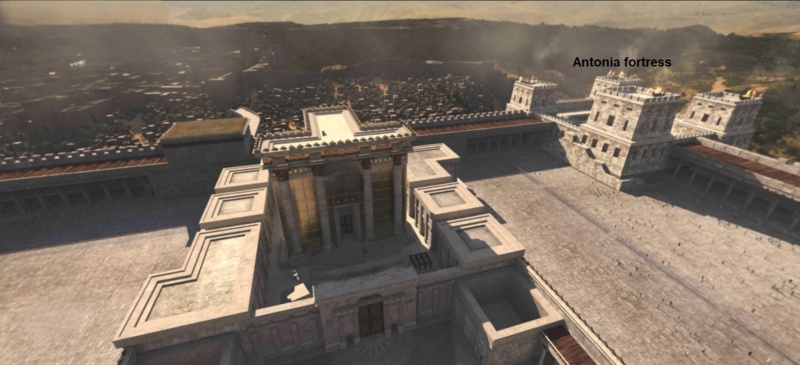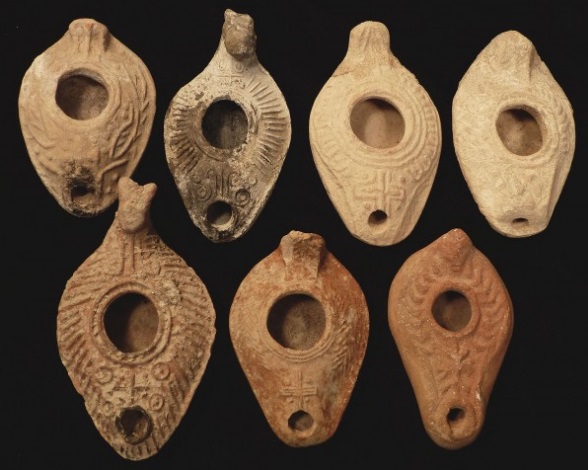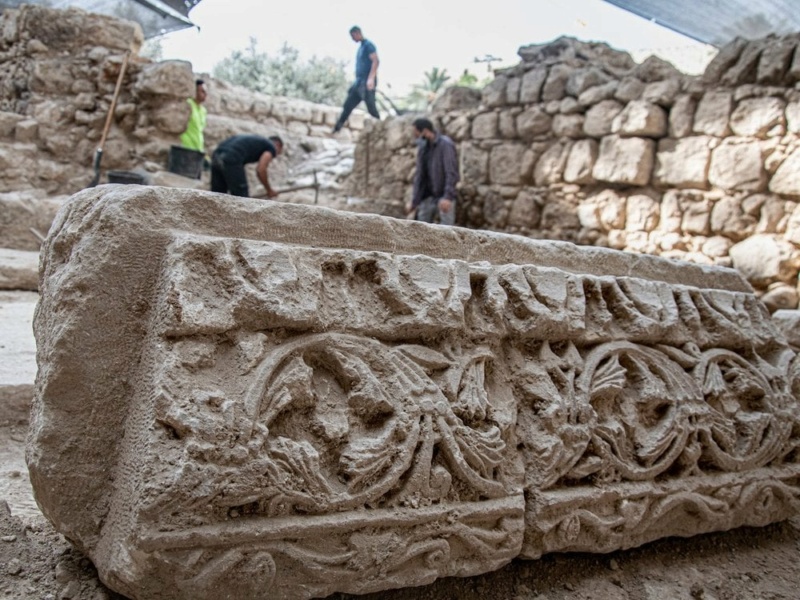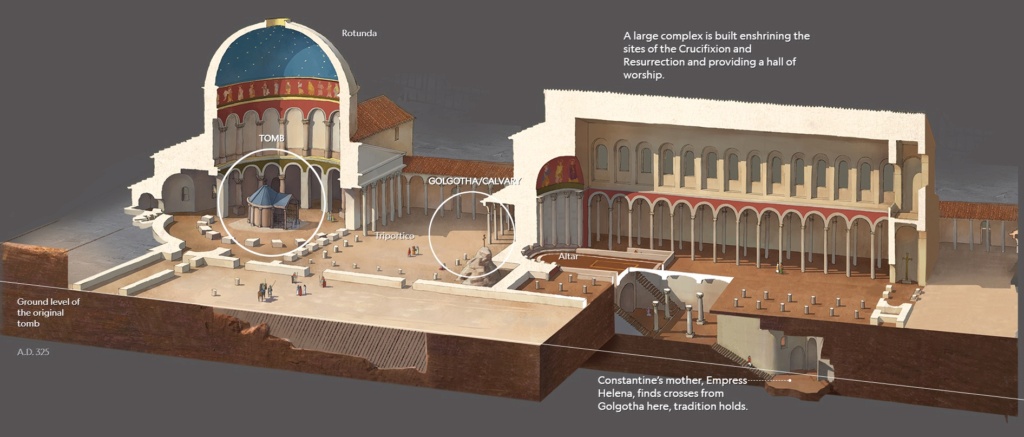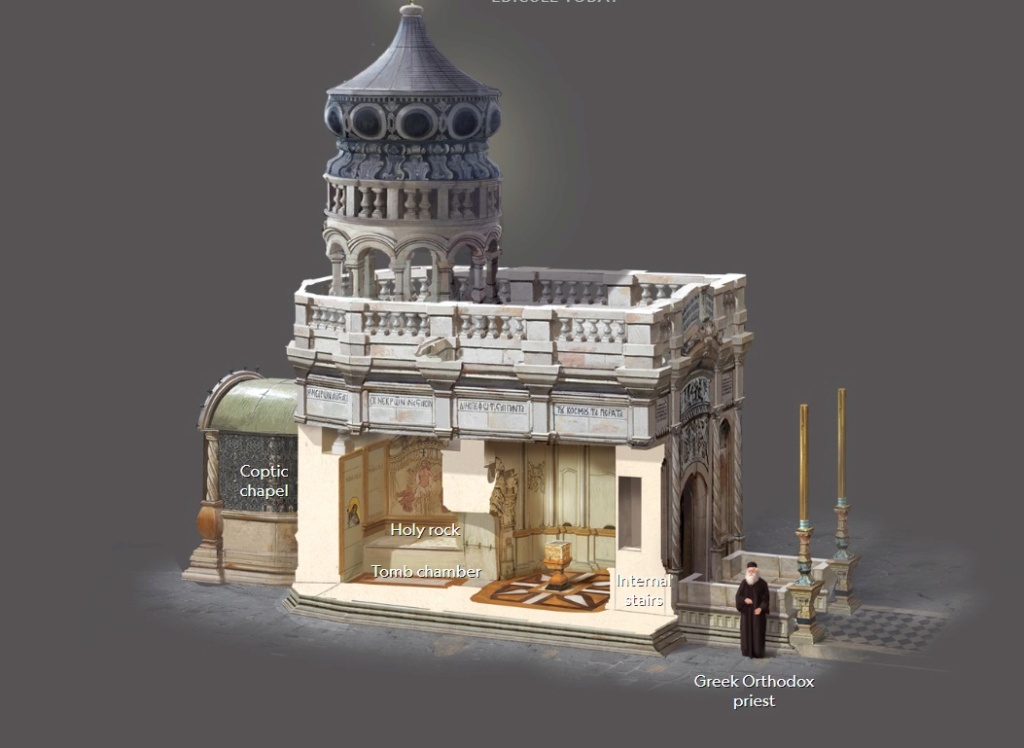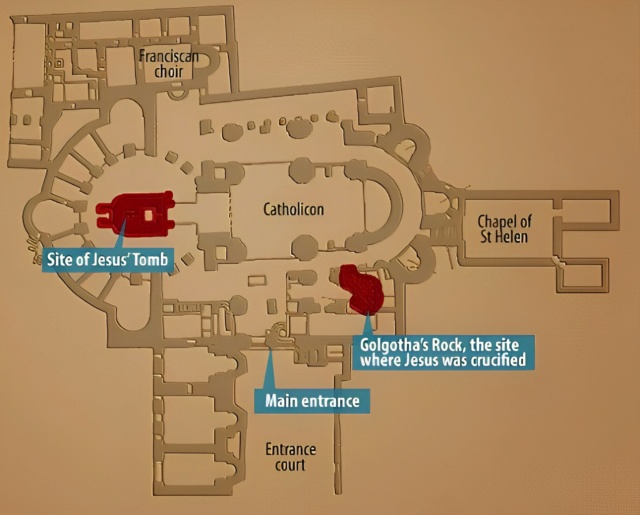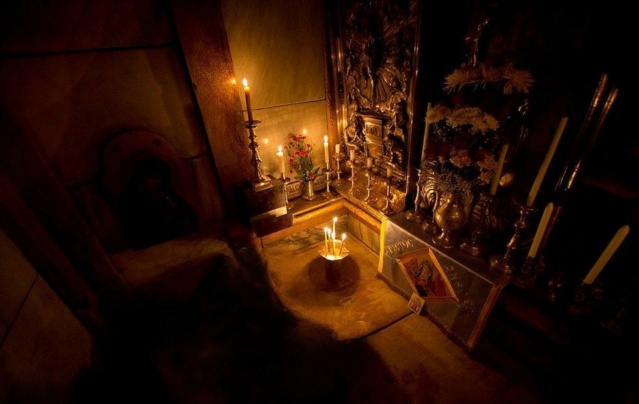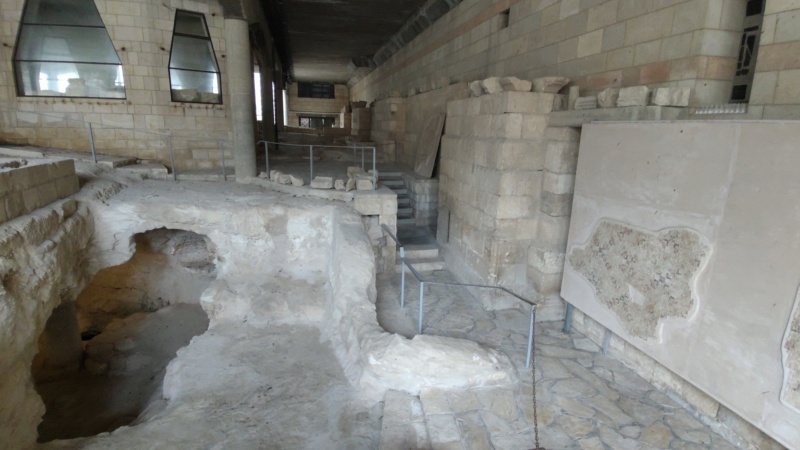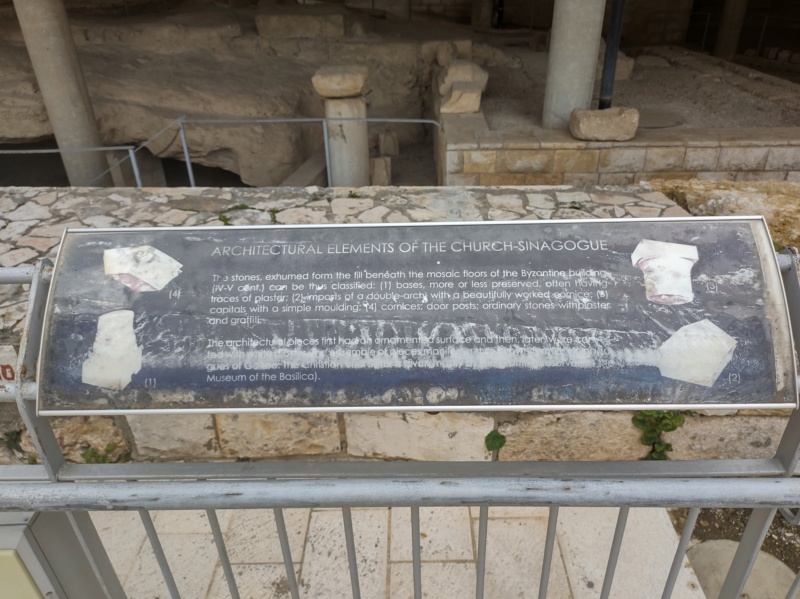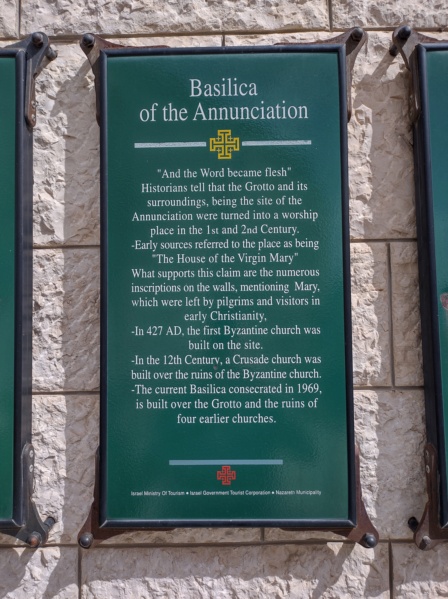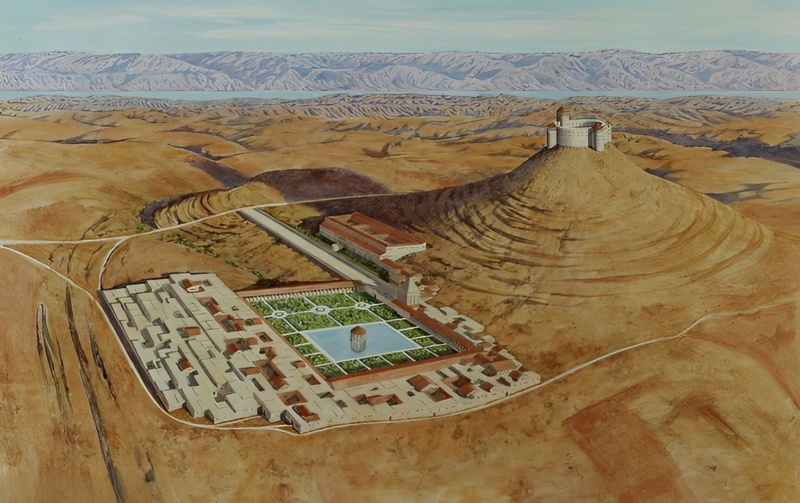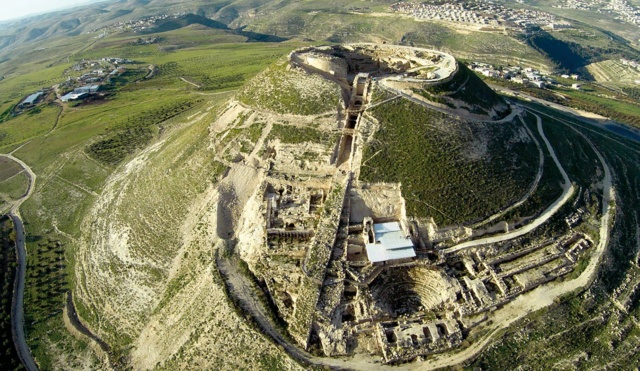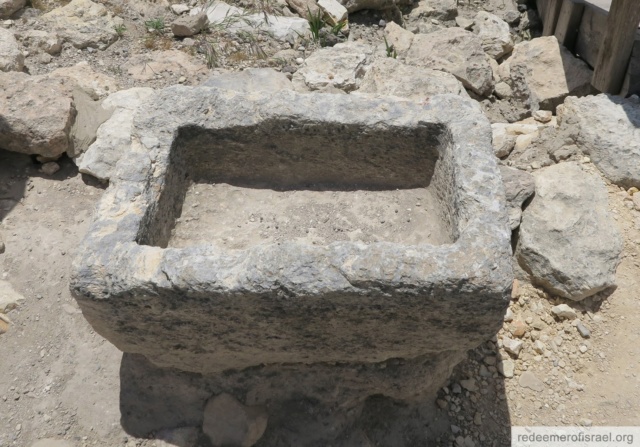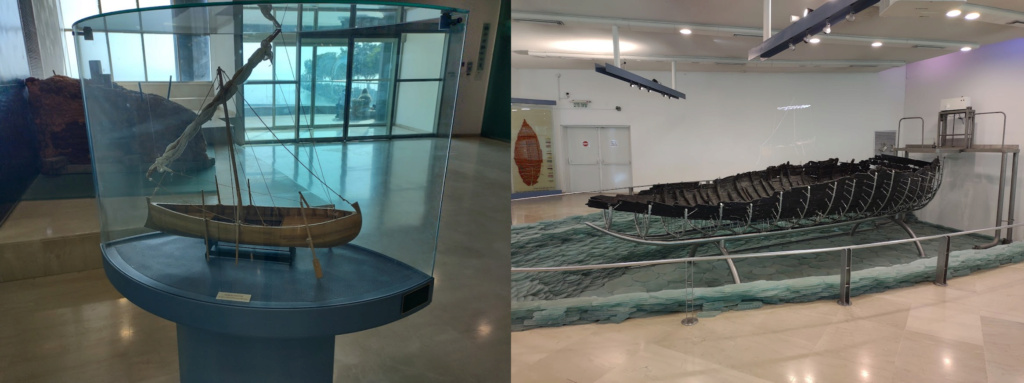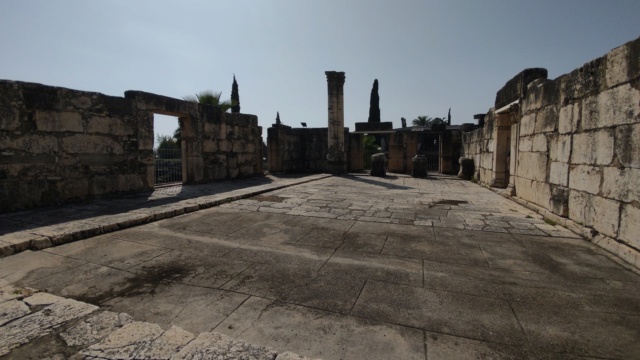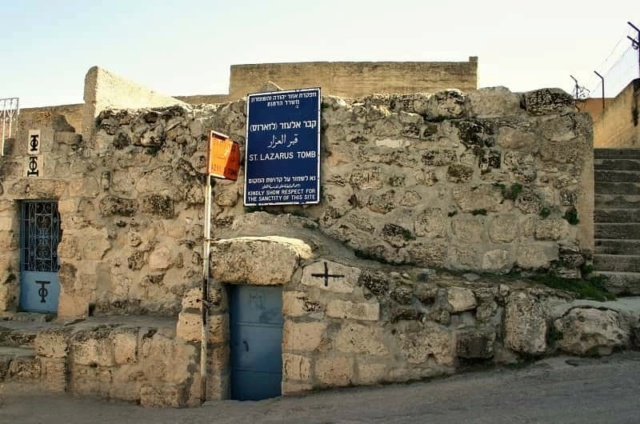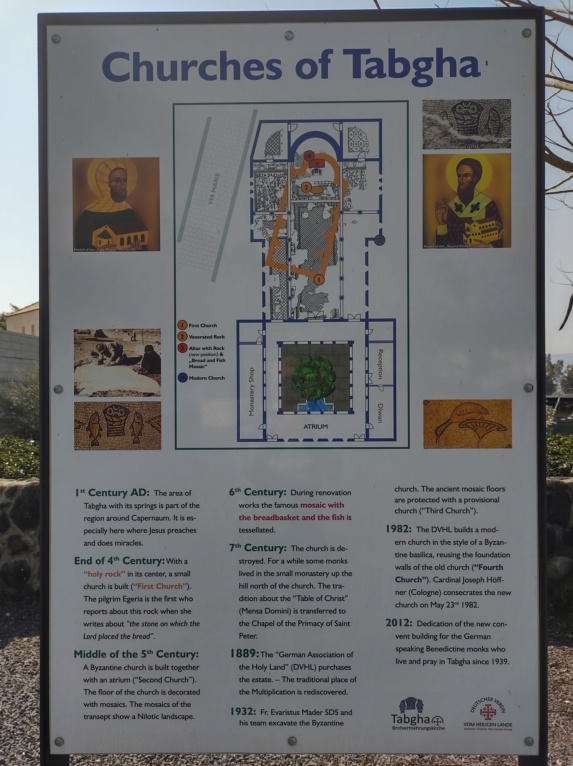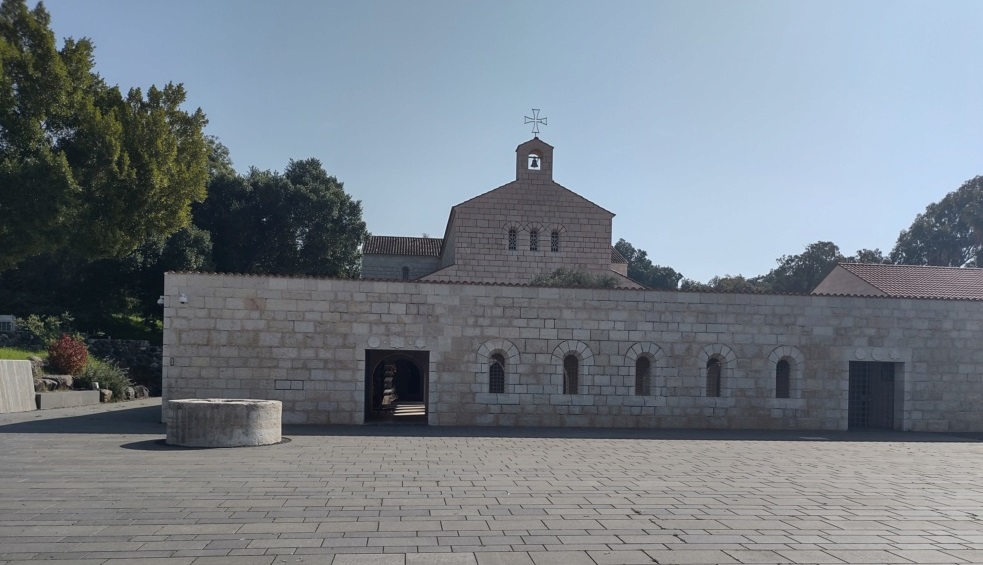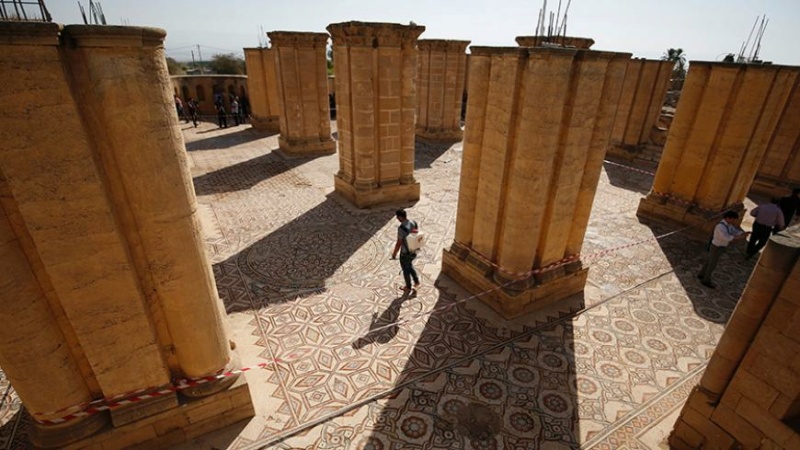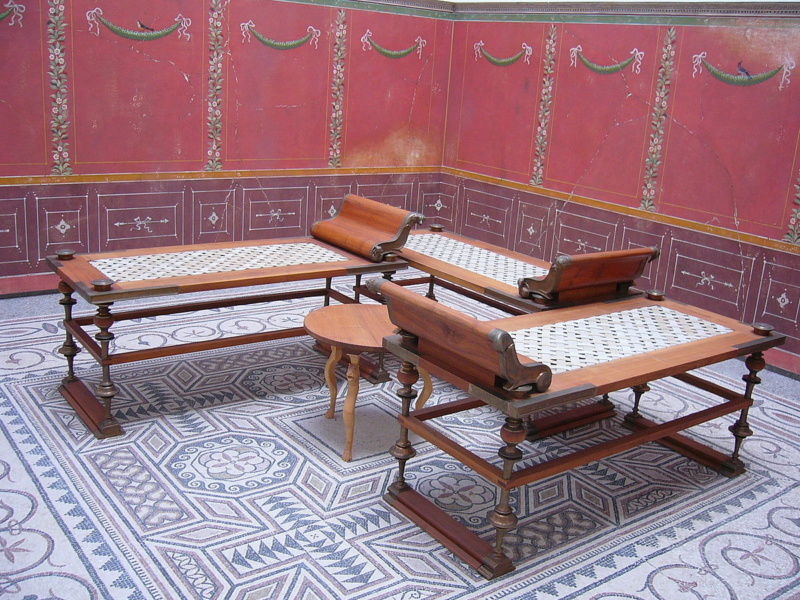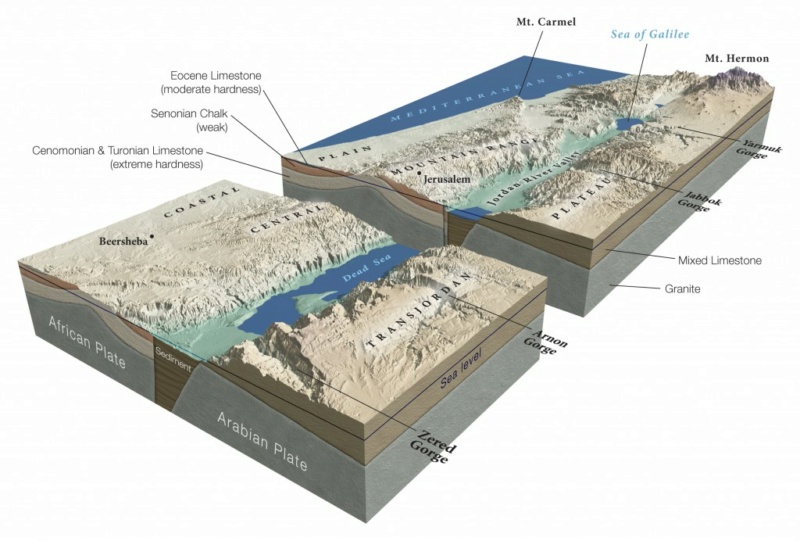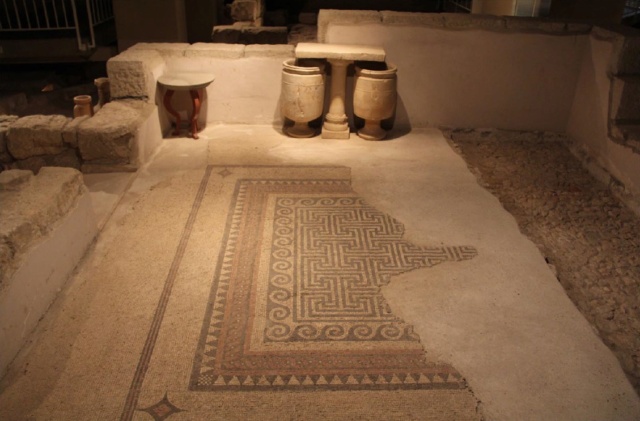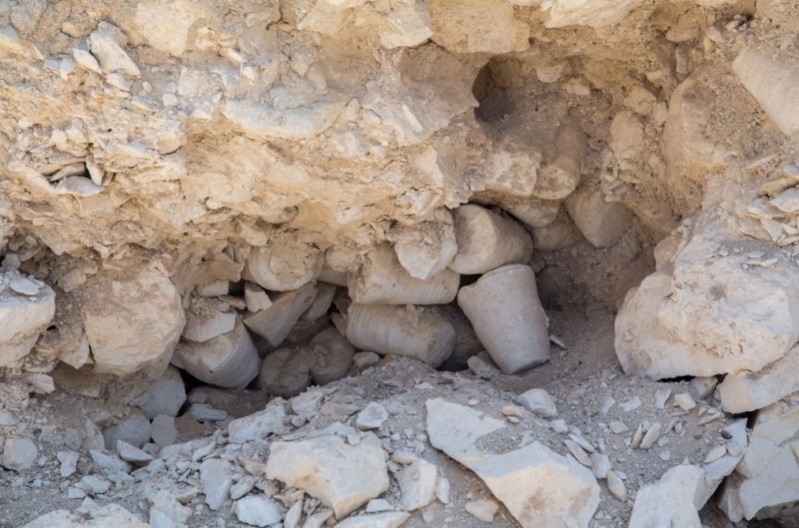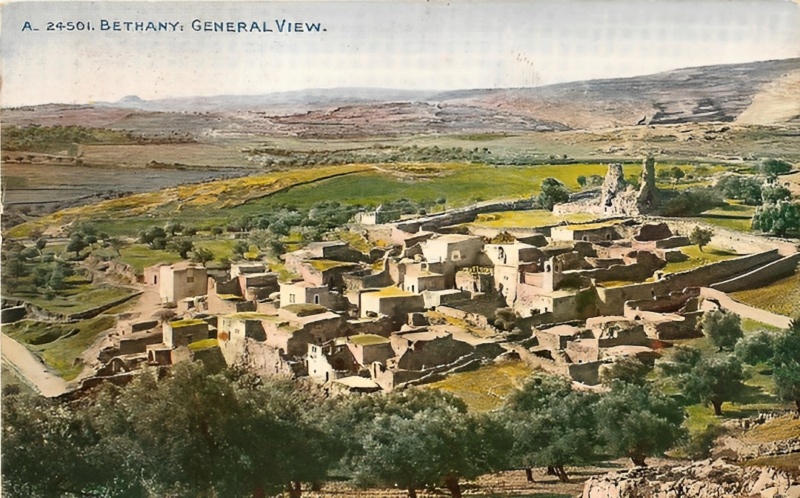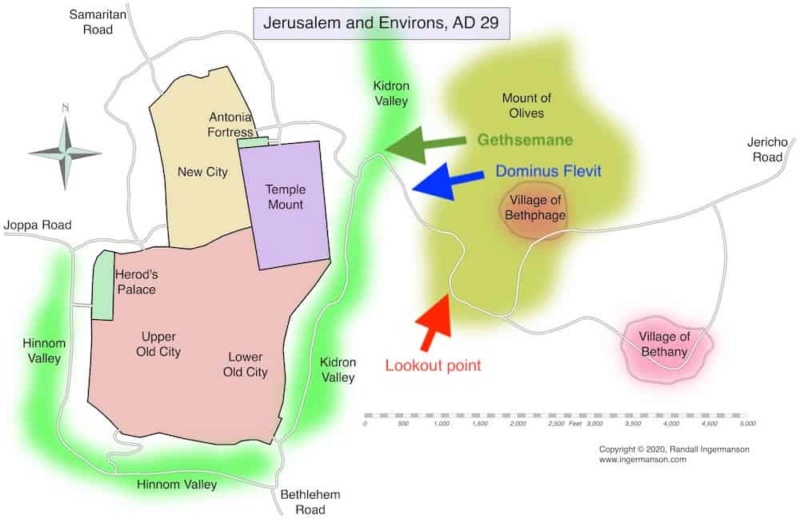Evidence that corroborates the authenticity and historicity of the events described in Matthew 11Early Christian writings: Matthew's gospel is one of the earliest and most widely accepted accounts of Jesus' life, teachings, and miracles. It was written within a few decades of Jesus' death and was widely circulated among the early Christian communities. The fact that the gospel was accepted and preserved by the early Christians suggests that the events and teachings recorded in it were considered reliable and authentic.
Eyewitness testimony: Matthew was a disciple of Jesus and an eyewitness to many of the events he recorded in his gospel. He was present for the teachings, miracles, and interactions described in Matthew 11, and his firsthand knowledge of these events lends credibility to their authenticity.
Historical context: The events and teachings described in Matthew 11 are consistent with the historical and cultural context of first-century Palestine. The social, religious, and political dynamics of the time are reflected in the interactions between Jesus and John the Baptist, as well as in Jesus' condemnation of the unrepentant cities.
Archaeological findings corroborate the historicity of the events described in Matthew 11Archaeological findings provide evidence that supports the historicity of the events described in Matthew 11. Matthew 11 records several significant events and teachings of Jesus, including his condemnation of the unrepentant cities and his interactions with John the Baptist, and there are several archaeological discoveries that shed light on the historical context of these events.
For example, in Matthew 11:23, Jesus condemns the cities of Chorazin, Bethsaida, and Capernaum, saying that they will be "brought down to Hades." Archaeological excavations have uncovered the remains of these cities, confirming their existence during the time of Jesus.
Another significant archaeological discovery that sheds light on the events of Matthew 11 is the recently discovered site of Bethsaida. This site, which was identified in the 1980s, has been excavated extensively and provides evidence of a fishing village that existed during the time of Jesus. The discovery of this site lends credibility to the gospel accounts of Jesus' interactions with his disciples, many of whom were fishermen from the Sea of Galilee.
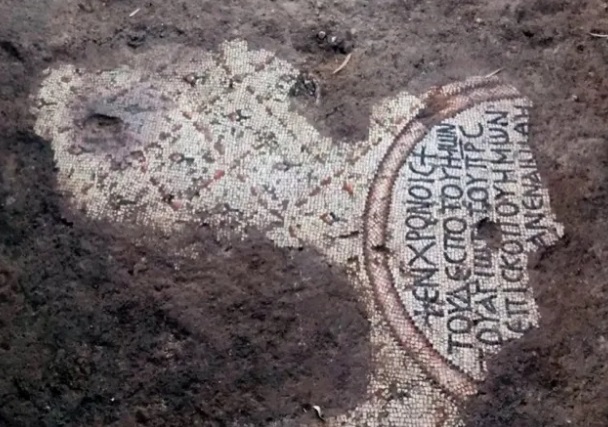
At the disputed site of biblical Bethsaida, el-Araj, archaeologists have made a fascinating discovery. A mosaic inscription, over a thousand years old, has been found that sheds light on the role of the Apostle Peter in leading the early Church.
At the el-Araj archeological site on the north shore of the Sea of Galilee, a significant Greek mosaic inscription has been recently discovered during excavation work at a Byzantine era basilica. This remarkable find presents a compelling argument that the area may indeed be the biblical city of Bethsaida. The basilica, which was unearthed in 2019, has been dubbed the "Church of the Apostles" due to its location over the alleged childhood home of Jesus' disciples, Simon Peter and Andrew.
The question of Bethsaida's precise location is a matter of ongoing debate. Currently, two locations are the primary contenders: el-Araj, where the new mosaic was discovered, and a site known as Jordan Park in et-Tell. For three decades, Jordan Park has been officially recognized by Israel as the city of Bethsaida, and it attracts tens of thousands of visitors daily. Both sites are situated in the vicinity where the Jordan River flows into the Sea of Galilee, although el-Araj is located directly on the shore, while et-Tell is located approximately two miles inland.
Bethsaida's significance in the Gospels is evident as it is referenced as the third most important city, following Jerusalem and Capernaum. The Gospels mention that it is the hometown of Andrew, Peter, and Philip and that it is close to the location where Jesus performed several miracles, including the healing of a blind man and walking on water. Additionally, Bethsaida is known as the site where Jesus fed a multitude of people with just five loaves of bread and two fish.
The Church of the Apostles mosaic inscription, which has been recently discovered, contains a reference to a donor called Constantine who is referred to as the "servant of Christ." The inscription goes on to make a request for intercession by Peter, who is described as the "chief and commander of the heavenly apostles." This wording is significant, as it was commonly used by Byzantine Christians to refer exclusively to Peter.
According to Dr. Mordechai Aviam, an archaeologist from Israel's Kinneret College who has been leading the excavation at el-Araj on the north shore of the Sea of Galilee, this discovery is a strong indication that Peter had a special association with the basilica, which was likely dedicated to him. He argues that since Byzantine Christian tradition identified Peter's home as being in Bethsaida rather than Capernaum, it is probable that the basilica commemorates his house.
The academic director of the dig, Prof. Steven Notley from New York's Nyack College, supports this view, stating that the discovery provides compelling evidence that the basilica was indeed dedicated to Peter. He argues against the theory put forth in 1921 by Father Gaudence Orfali, which suggested that Capernaum was Peter's childhood home instead of Bethsaida. Although there is an octagonal church in Capernaum, Notley and Aviam contend that it cannot be the Church of the Apostles, and that the site in Capernaum may have been the home of Peter's mother-in-law rather than his childhood home.
Furthermore, other discoveries like ancient coins, inscriptions, and artifacts from the time of Jesus, have been found at various sites in Israel, providing additional evidence of the historical and cultural context of the events described in Matthew 11.
In conclusion, archaeological findings offer valuable insights into the historical context of the events and teachings described in Matthew 11. The discoveries of ancient cities and artifacts from the time of Jesus lend credibility to the gospel accounts and support the historicity of the events recorded in the text.
Examples of undesigned coincidences between Matthew 11 and the other gospels, and New Testament textsJohn the Baptist's doubts (Matthew 11:2-3) and the answer of Jesus (Luke 7:18-23): In Matthew 11, John the Baptist sends his disciples to ask Jesus if he is the Messiah or if they should wait for someone else. In Luke 7, John sends messengers with the same question. The accounts complement each other and provide a fuller picture of the interaction between John and Jesus, without contradicting each other.
Jesus' condemnation of Chorazin, Bethsaida, and Capernaum (Matthew 11:20-24) and his ministry in those cities (Mark 1:21, Luke 4:31): Matthew 11 records Jesus' condemnation of these cities, while Mark and Luke mention Jesus' ministry in them. The two details fit together in a natural way, without any apparent coordination or contrivance.
The invitation to the weary and burdened (Matthew 11:28-30) and the healing of the man with the withered hand (Mark 3:1-6): In Matthew 11, Jesus invites the weary and burdened to come to him and find rest. In Mark 3, he heals a man with a withered hand on the Sabbath. The healing demonstrates Jesus' power and authority, while the invitation to the weary and burdened shows his compassion and concern for those in need. The two events complement each other and provide a fuller picture of Jesus' ministry.
The rejection of Jesus by the Jewish leaders (Matthew 11:16-19) and the plot to kill Lazarus (John 12:9-11): In Matthew 11, Jesus compares the Jewish leaders to children who refuse to play along with the other children. In John 12, the Jewish leaders plot to kill Lazarus, whom Jesus had raised from the dead. The two details fit together in a natural way, as they both illustrate the hostility of the Jewish leaders towards Jesus and his followers.
Evidence that corroborates the authenticity and historicity of the events described in Matthew 12Historical and cultural context: Matthew 12 describes several events that took place in first-century Palestine, during the time of the Roman occupation. The Gospels provide numerous details about the customs, religious practices, and political tensions of the time that are consistent with what is known from other historical sources, such as Josephus and Tacitus. The descriptions of the Pharisees, scribes, and other Jewish religious leaders are also consistent with what is known about the social and religious structures of the time.
Internal consistency with other Gospel accounts: The events described in Matthew 12 are also found in other Gospel accounts, such as Mark 2 and Luke 6. While each Gospel writer provides his own unique perspective and details, the overall picture is consistent across all three accounts. This suggests that the events are based on real historical events.
Archaeological findings corroborate the historicity of the events described in Matthew 12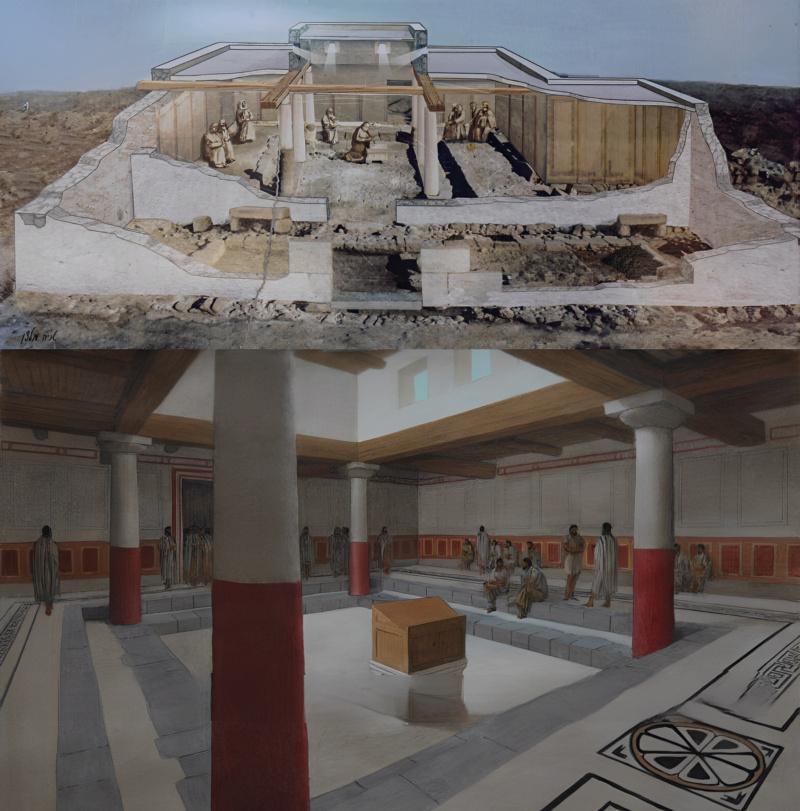 Synagogues:
Synagogues: Matthew 12:9-14 describes Jesus healing a man with a withered hand on the Sabbath in a synagogue. Archaeological excavations have uncovered the remains of several synagogues from the time of Jesus, including the ruins of a first-century synagogue in Magdala, a town near the Sea of Galilee. This discovery provides evidence of the existence of synagogues in the region during Jesus' time, and supports the likelihood that Jesus would have interacted with synagogues and their leaders.
Stone vessels: In Matthew 12:43-45, Jesus tells a parable about an unclean spirit that returns to a "house" that has been swept clean, and brings seven other spirits with it. Some scholars have suggested that the "house" may be a reference to a ritual cleansing that involved the use of water and a stone vessel. Archaeologists have discovered numerous stone vessels from the time of Jesus, including one that was found in the town of Cana, where Jesus performed his first miracle, turning water into wine.
Pharisees and Sadducees: Matthew 12:14-15 describes the Pharisees' plot to destroy Jesus, while verse 23 mentions a demon-possessed man who was healed by Jesus, causing the crowds to wonder if he might be the Son of David. Both the Pharisees and the Sadducees were prominent Jewish sects during the time of Jesus, and archaeological evidence has been found in Israel that confirms their existence and provides insight into their beliefs and practices.
Coins: In Matthew 12:40, Jesus speaks of the sign of Jonah, who was in the belly of a great fish for three days and three nights. Archaeologists have discovered numerous coins from the time of Jesus that depict images of sea creatures, including fish and dolphins. These coins provide a glimpse into the iconography and symbolism of the time, and suggest that the story of Jonah was a familiar and powerful image in Jewish and pagan culture.
Examples of undesigned coincidences between Matthew 12 and the other gospels, and New Testament textsIn Matthew 12:15-21, Jesus heals many people and warns them not to reveal his identity. This incident is also described in Mark 3:7-12 and Luke 6:17-19. However, Matthew's account provides additional details about Jesus' actions and motivations that are not found in the other accounts. For example, Matthew notes that Jesus fulfilled the prophecy of Isaiah by not drawing attention to himself, while Mark and Luke do not mention this. This suggests that both accounts are based on real historical events.
In Matthew 12:38-42, the Pharisees ask Jesus for a sign to prove that he is the Messiah. This incident is also described in Luke 11:16, 29-32. However, Matthew provides additional details about the sign that Jesus gives, which is the sign of Jonah. Matthew notes that Jonah was in the belly of the fish for three days and three nights, which is a detail that is not mentioned in Luke's account. This suggests that both accounts are based on real historical events and that Matthew's account fills in additional details that were not included in Luke's.
In Matthew 12:43-45, Jesus tells the parable of the unclean spirit that returns to a person's house after being cast out, finding it empty, and bringing with it seven other spirits. This incident is not found in the other Gospel accounts. However, the parable is consistent with Jesus' teachings in other parts of the Gospels and provides additional insight into his message about the importance of spiritual purity.
Evidence that corroborates the authenticity and historicity of the events described in Matthew 13Historical accuracy: Some scholars believe that the parables in Matthew 13 accurately reflect the culture and traditions of the time in which they were written, and that the details of the stories are consistent with what we know about the historical context of the period.
Consistency with other texts: The parables in Matthew 13 are consistent with the teachings and themes found in other books of the New Testament, suggesting that they are part of a larger body of religious literature that was written by a community of believers.
Impact on believers: Many people believe that the teachings of Jesus contained in Matthew 13 have had a profound impact on the lives of believers throughout history, and that this impact is evidence of the truthfulness and authenticity of the events described in the chapter.
Manuscript evidence: There is evidence that Matthew 13 was part of the original manuscript of the Gospel of Matthew, which was written in the first century AD. While there are some variations between different versions of the Bible, the basic content of the chapter is consistent across all of them.
Archaeological findings confirm the historicity of the events described in Matthew 13Matthew 13 records several parables told by Jesus, including the Parable of the Sower, the Parable of the Wheat and the Tares, and the Parable of the Mustard Seed. While there are no specific archaeological findings that directly confirm the events described in Matthew 13, there are several discoveries that shed light on the historical and cultural context in which these events took place.
Agricultural practices: Many of the parables in Matthew 13 use imagery and metaphors related to agriculture and farming, such as sowing seeds and harvesting crops. Archaeological discoveries of ancient farming tools and implements, as well as depictions of farming in ancient art, provide insight into the agricultural practices of the time and support the plausibility of the parables.
Archaeological sites: Matthew 13 also mentions several locations and landmarks that have been identified through archaeological excavations. For example, in the Parable of the Mustard Seed, Jesus describes the growth of a tiny seed into a large tree.

Ancient olive trees in the Garden of Gethsemane in Jerusalem, some of which are estimated to be over 2,000 years old, provide a visual representation of the size and growth of trees in the region during Jesus' time.
Coins: In Matthew 13:44-46, Jesus tells the parable of the hidden treasure and the pearl of great price. Archaeological discoveries of ancient coins and hoards, such as the famous Caiaphas Ossuary, provide evidence of the use and value of precious metals and gems during the time of Jesus.

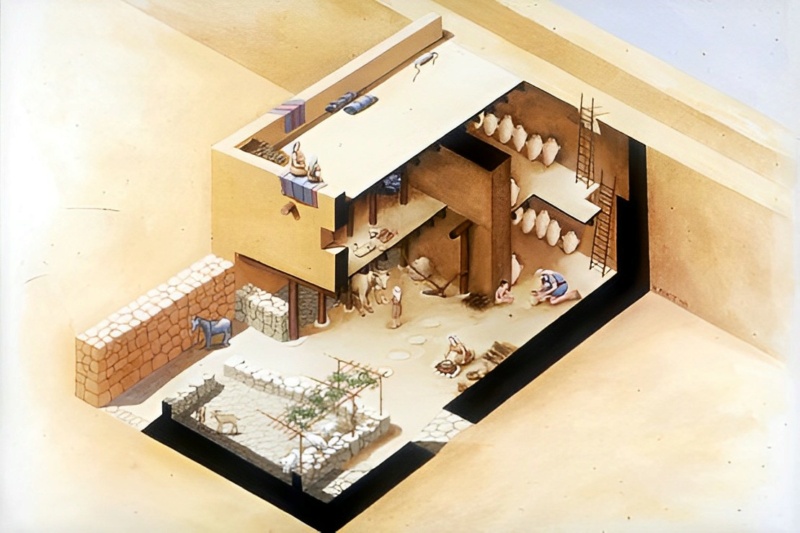
An illustration depicting a house in Palestine during the 1st century AD.
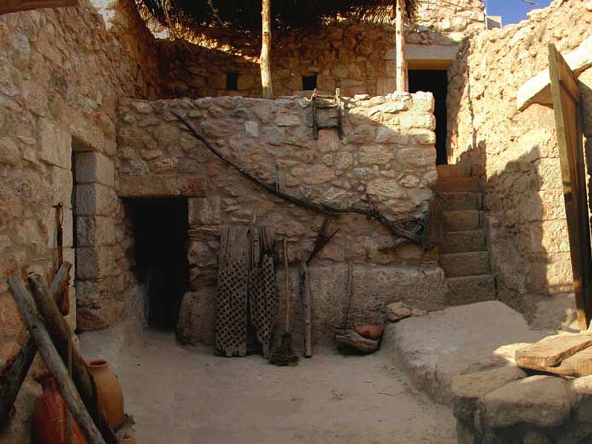
Reconstruction of the central courtyard of a two-storey house in ancient Israel

An image captured in the 1900s showcases a village in the Middle East, featuring a diverse array of stones, some refined and some unpolished. The structures exhibit small windows, with doors situated below the street level. The houses are built with flat rooftops, and their positioning appears irregular and random.
Ceramic artifacts: In Matthew 13:33, Jesus tells the Parable of the Leaven, in which he compares the kingdom of heaven to leaven that a woman hid in three measures of flour. Archaeological discoveries of ancient ceramic vessels, including cooking pots and storage jars, provide evidence of the use of leaven in bread-making during the time of Jesus.
Examples of undesigned coincidences between Matthew 13 and the other gospels, and New Testament textsIn Matthew 14:3-5, it is stated that Herod Antipas had arrested John the Baptist and put him in prison because he had spoken out against Herod's marriage to his brother's wife. This detail is not explained in Matthew, but in Mark 6:17-18, we learn that Herodias, the woman whom Herod had married, had a grudge against John the Baptist and wanted him dead. This explains why Herod had John arrested, and it is a detail that is missing from Matthew's account.
In Matthew 14:13, it is said that Jesus went away by boat to a solitary place after hearing about the death of John the Baptist. This detail is not explained in Matthew, but in Mark 6:30-32, we learn that Jesus was trying to get away from the crowds that were following him and his disciples. This detail provides an explanation for why Jesus went to a solitary place, and it is a detail that is missing from Matthew's account.
In Matthew 14:22-33, there is a story of Jesus walking on water and Peter attempting to do the same. This event is not mentioned in Mark, but in John 6:16-21, it is said that the disciples were trying to cross the Sea of Galilee in a boat, but a storm came up and they were afraid. This detail provides an explanation for why Jesus had to walk on water to get to the disciples' boat, and it is a detail that is missing from Matthew's account.
In Matthew 14:34-36, it is said that when Jesus and his disciples arrived on the other side of the Sea of Galilee, the people recognized him and brought their sick to be healed. This detail is not explained in Matthew, but in Mark 6:53-56, we learn that the people had heard about Jesus and his miracles and had come from all around to see him. This detail provides an explanation for why the people recognized Jesus and sought his healing, and it is a detail that is missing from Matthew's account.
What lines of evidence corroborate the authenticity of the events described in Matthew 14?Historical accuracy: Some scholars believe that the events in Matthew 14 accurately reflect the culture and traditions of the time in which they were written, and that the details of the stories are consistent with what we know about the historical context of the period.
Consistency with other texts: The events in Matthew 14 are consistent with the teachings and themes found in other books of the New Testament, suggesting that they are part of a larger body of religious literature that was written by a community of believers.
Impact on believers: Many people believe that the teachings of Jesus contained in Matthew 14 have had a profound impact on the lives of believers throughout history, and that this impact is evidence of the truthfulness and authenticity of the events described in the chapter.
Manuscript evidence: There is evidence that Matthew 14 was part of the original manuscript of the Gospel of Matthew, which was written in the first century AD. While there are some variations between different versions of the Bible, the basic content of the chapter is consistent across all of them.
Eyewitness accounts: According to the Bible, many of the people who witnessed the events described in Matthew 14 were still alive when the Gospels were written, and their accounts would have been available to the writers of the Gospels.
Archaeological findings confirm the historicity of the events described in Matthew 14For example, Matthew 14:1-12 describes the beheading of John the Baptist by Herod Antipas.
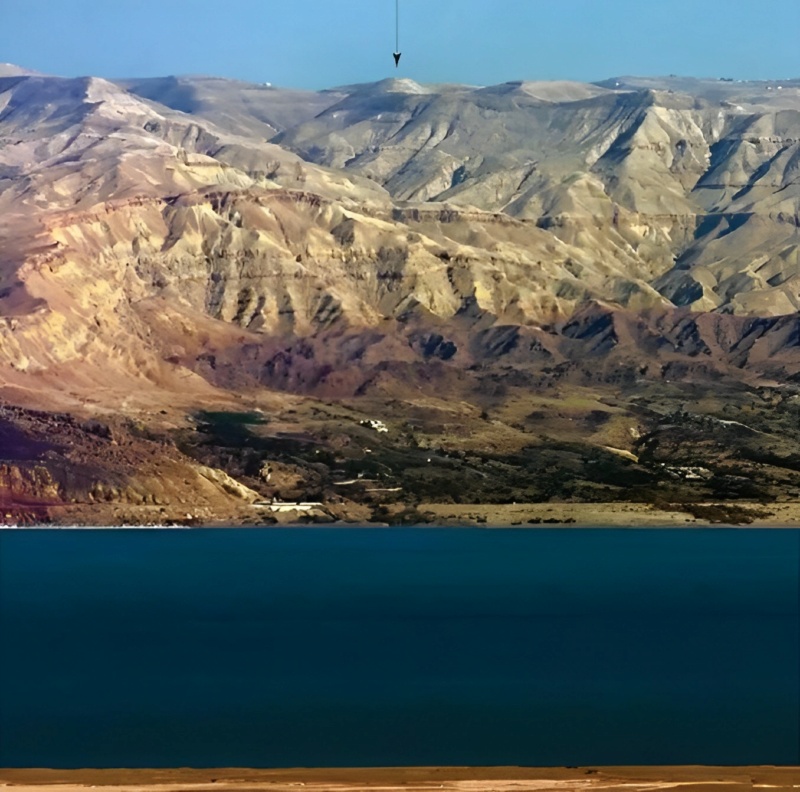
The location of Machaerus can be seen above the eastern bank of the Dead Sea, marked with an arrow. The view of this location from the Israeli seashore is clear. (credit: Győző Vörös )

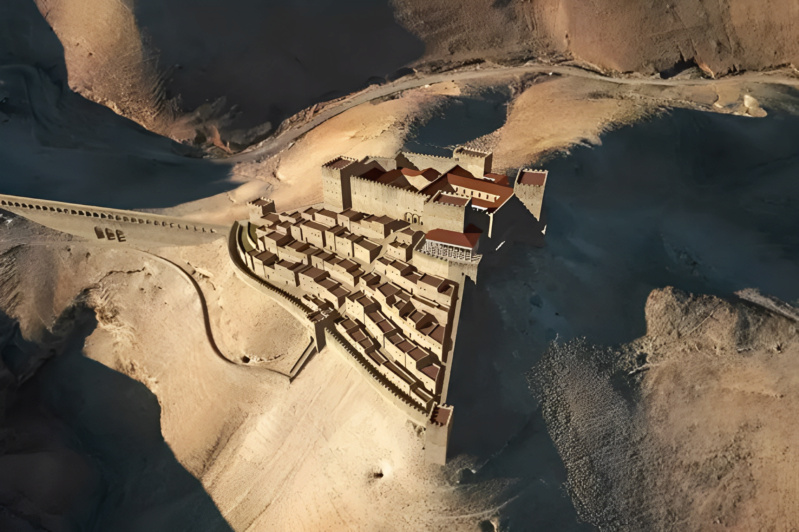
Members of the Hungarian excavation team, including architects Tamás Dobrosi, Tamás Dósa Papp, and Imre Balázs Arnóczki, along with graphic artist István Őri Kiss, have created a theoretical architectural reconstruction of Machaerus city. The reconstruction has been superimposed on the modern landscape, offering a glimpse into what the city may have looked like in ancient times.

The Hungarian excavation team, comprised of architects Tamás Dobrosi, Tamás Dósa Papp, and Imre Balázs Arnóczki, and graphic artist István Őri Kiss, have produced an illustrative reconstruction of the courtyard at Machaerus. This theoretical architectural rendering provides a visual representation of what the courtyard may have looked like in ancient times.
Steve Law (2021): Archaeologists Believe This is Where John the Baptist Was Sentenced to Death in the Bible’s Account. It is a dramatic and gruesome account recorded in two of the Gospels of the New Testament. Herod Antipas, son of King Herod the Great, had John the Baptist executed after promising to grant any request of a woman who had pleased him with her dance. She asked for the head of John. According to Jewish historian Flavius Josephus (AD 37-100) these events took place in AD 29 at Herod’s mountaintop citadel of Machaerus. The remains of Machaerus sit above the Dead Sea’s east shore in modern Jordan. Now, a Hungarian Franciscan team of archaeologists headed by excavation director Győző Vörös think they have discovered the pavilion at Machaerus where the deadly dance of Salome, the daughter of Herodias, elicited the fatal pronouncement. Machaerus was the most powerful stronghold in the portion ruled by his son Herod Antipas, which included Galilee and parts of Jordan. The key to the conclusion by Vörös and his team that they had likely found the very floor where the dance took place was the discovery of a semi-circular niche beside a courtyard. The 7,000 square foot courtyard had originally been unearthed in 1980, but the remains of the throne were only recently recognized. The original level of the floor is lost, but evidence uncovered by the archaeologists last year points to a set of stairs leading to an elevated platform on one side of the hall where the throne sat from which Herod Antipas would have watched the dance. Some archaeologists have cautioned against jumping to conclusions as far as pinpointing the spot, especially until more work is done. However, while the Bible does not name the location, it does seem very likely that the performance leading to the beheading of John the Baptist took place within the walls of this fortress. In agreement with the report of Josephus, Vörös argued that the fort at Machaerus was the only royal palace that Herod Antipas inherited from his father, making it “a perfect place for his birthday party.”
The Bible’s account of this episode is covered in the Gospels of Matthew chapter 14 and Mark chapter 6. They tell of John the Baptist objecting to Herod Antipas taking as his wife Herodias, who had been married to Herod’s brother Philip. This clearly violated the law of Moses and this rebuke of Herod is also recorded in Luke 3:19-20. Herod did not kill him out of fear of the people who recognized John as a prophet, but he had John thrown into prison to quiet his pronouncements against him. 1
This event is also mentioned by the Jewish historian Josephus in his Antiquities of the Jews, where he provides additional details about Herod's palace and the location of John's imprisonment and execution. Archaeological excavations at Machaerus, a fortress located in modern-day Jordan that was one of Herod's palaces, have uncovered evidence of the site's use as a prison and execution site, lending credibility to Josephus' account and the biblical description of John's fate.
Matthew 14:15-21 describes the feeding of the 5,000, which is also described in the other Gospels. While there is no direct archaeological evidence for this specific miracle, the location where it occurred is believed to be near the northern shore of the Sea of Galilee. Excavations in this region have uncovered several first-century fishing villages, including Capernaum, which was Jesus' base of operations during his ministry in Galilee. The discovery of ancient fishing nets and boats in the region provides further support for the biblical account of Jesus' interactions with fishermen and his use of parables related to fishing.
Overall, while there are no specific archaeological findings that directly confirm the events of Matthew 14, the historical and geographical details mentioned in the chapter are consistent with what we know from other sources, lending credibility to the biblical account.
Examples of undesigned coincidences between Matthew 14 and the other gospels, and New Testament textsIn Matthew 14:3-5, it is stated that Herod Antipas had arrested John the Baptist and put him in prison because he had spoken out against Herod's marriage to his brother's wife. This detail is not explained in Matthew, but in Mark 6:17-18, we learn that Herodias, the woman whom Herod had married, had a grudge against John the Baptist and wanted him dead. This explains why Herod had John arrested, and it is a detail that is missing from Matthew's account.
In Matthew 14:13, it is said that Jesus went away by boat to a solitary place after hearing about the death of John the Baptist. This detail is not explained in Matthew, but in Mark 6:30-32, we learn that Jesus was trying to get away from the crowds that were following him and his disciples. This detail provides an explanation for why Jesus went to a solitary place, and it is a detail that is missing from Matthew's account.
In Matthew 14:22-33, there is a story of Jesus walking on water and Peter attempting to do the same. This event is not mentioned in Mark, but in John 6:16-21, it is said that the disciples were trying to cross the Sea of Galilee in a boat, but a storm came up and they were afraid. This detail provides an explanation for why Jesus had to walk on water to get to the disciples' boat, and it is a detail that is missing from Matthew's account.
In Matthew 14:34-36, it is said that when Jesus and his disciples arrived on the other side of the Sea of Galilee, the people recognized him and brought their sick to be healed. This detail is not explained in Matthew, but in Mark 6:53-56, we learn that the people had heard about Jesus and his miracles and had come from all around to see him. This detail provides an explanation for why the people recognized Jesus and sought his healing, and it is a detail that is missing from Matthew's account.
Evidence that corroborates the authenticity and historicity of the events described in Matthew 15Historical accuracy: Some scholars believe that the events in Matthew 15 accurately reflect the culture and traditions of the time in which they were written, and that the details of the stories are consistent with what we know about the historical context of the period.
Consistency with other texts: The events in Matthew 15 are consistent with the teachings and themes found in other books of the New Testament, suggesting that they are part of a larger body of religious literature that was written by a community of believers.
Impact on believers: Many people believe that the teachings of Jesus contained in Matthew 15 have had a profound impact on the lives of believers throughout history, and that this impact is evidence of the truthfulness and authenticity of the events described in the chapter.
Manuscript evidence: There is evidence that Matthew 15 was part of the original manuscript of the Gospel of Matthew, which was written in the first century AD. While there are some variations between different versions of the Bible, the basic content of the chapter is consistent across all of them.
Eyewitness accounts: According to the Bible, many of the people who witnessed the events described in Matthew 15 were still alive when the Gospels were written, and their accounts would have been available to the writers of the Gospels.
Archaeological findings confirm the historicity of the events described in Matthew 15There are some broader archaeological and historical context that support the plausibility of the story:

The most important early manuscript of the Mishnah (Mishna)Offsite Link, the first major written redaction of the Jewish oral traditions called the "Oral Torah" and the first major work of Rabbinic Judaism, is the Kaufmann Manuscript. Sometimes called the Codex Kaufmann, it is MS S 50 in the Kaufmann Collection of the Hungarian Academy of SciencesOffsite Link, Budapest, and may be of South Arabian or Italian origin. It was probably written between 950 and 1050 CE, though some scholars date it to the twelth century. 1
Ritual handwashing: The practice of ritual handwashing was common among Jews in the first century AD, and is attested in various ancient Jewish texts. The Mishnah, a collection of Jewish oral law from around 200 AD, contains detailed rules about handwashing and other ritual purifications. This suggests that the criticism of Jesus in Matthew 15 is based on a real Jewish practice.
Pharisees and scribes: The Pharisees and scribes mentioned in Matthew 15 were real groups within Jewish society in the first century AD. They are attested in other ancient sources, such as the Jewish historian Josephus and the Dead Sea Scrolls.
Examples of undesigned coincidences between Matthew 15 and the other gospels, and New Testament textsThe feeding of the four thousand: In Matthew 15:32-38, Jesus feeds a crowd of 4,000 people with seven loaves of bread and a few fish. In Mark 8:1-9, a similar story is told, but with a different crowd and different numbers of loaves and fish. However, when comparing the two accounts, we see that the location is the same (near the Sea of Galilee), and the same basic sequence of events is followed. Matthew's account provides more specific details, such as the fact that the crowd had been with Jesus for three days and that there were seven baskets of leftovers, while Mark's account emphasizes the large number of people who were fed.
The Canaanite woman's daughter: In Matthew 15:21-28, a Canaanite woman comes to Jesus to ask him to heal her demon-possessed daughter. Jesus initially rebuffs her, saying that he was sent only to the lost sheep of Israel, but the woman persists and Jesus ultimately commends her faith and heals her daughter. In Mark 7:24-30, a similar story is told, but with some notable differences. For example, Mark does not identify the woman as a Canaanite, and Jesus' initial response is simply that it is not right to take the children's bread and toss it to the dogs. However, when we compare the two accounts, we see that the basic sequence of events is the same, and that the woman's persistence and faith are highlighted in both accounts.
Washing of hands: In Matthew 15:1-20, Jesus teaches about the importance of inner purity rather than outward cleanliness, and criticizes the Pharisees and scribes for their emphasis on external rituals such as washing their hands before eating. In Mark 7:1-23, a similar teaching is given, but with some differences in detail. For example, Mark emphasizes that the Pharisees were asking why Jesus' disciples did not follow the tradition of the elders by washing their hands before eating, while Matthew does not mention the disciples specifically. However, when we compare the two accounts, we see that the basic theme of Jesus' teaching is the same in both, and that the emphasis on inner purity is a common thread.
What lines of evidence corroborate the authenticity of the events described in Matthew 16?Historical accuracy: Some scholars believe that the events in Matthew 16 accurately reflect the culture and traditions of the time in which they were written, and that the details of the stories are consistent with what we know about the historical context of the period.
Consistency with other texts: The events in Matthew 16 are consistent with the teachings and themes found in other books of the New Testament, suggesting that they are part of a larger body of religious literature that was written by a community of believers.
Manuscript evidence: There is evidence that Matthew 16 was part of the original manuscript of the Gospel of Matthew, which was written in the first century AD. While there are some variations between different versions of the Bible, the basic content of the chapter is consistent across all of them.
Eyewitness accounts: According to the Bible, many of the people who witnessed the events described in Matthew 16 were still alive when the Gospels were written, and their accounts would have been available to the writers of the Gospels.
Impact on believers: Many people believe that the teachings of Jesus contained in Matthew 16 have had a profound impact on the lives of believers throughout history, and that this impact is evidence of the truthfulness and authenticity of the events described in the chapter.
Archaeological findings confirm the historicity of the events described in Matthew 16There are no specific archaeological findings that directly confirm the historicity of the events described in Matthew 16. However, there are archaeological findings that support the overall historical accuracy of the Gospels, and which indirectly provide some corroboration for the events in Matthew 16.
For example, excavations in the ancient city of Caesarea Philippi, where Jesus and his disciples were when Peter made his confession, have uncovered the remains of a pagan temple dedicated to the god Pan, which is consistent with the Gospel account that the conversation took place in "the region of Caesarea Philippi" (Matthew 16:13).
In addition, archaeological evidence has confirmed many of the details of daily life in ancient Israel that are described in the Gospels, such as the types of food that were eaten, the style of clothing that was worn, and the types of housing that were common. This provides some indirect corroboration for the events in Matthew 16, as it suggests that the Gospel writers had a detailed and accurate understanding of the historical context in which they were writing.
Finally, it's worth noting that the historical reliability of the Gospels has been affirmed by many scholars, based on a variety of criteria including their use of eyewitness testimony, their consistency with other historical sources, and their internal coherence. While this doesn't provide direct archaeological confirmation of the events in Matthew 16, it does suggest that the Gospels are generally trustworthy as historical sources.
Examples of undesigned coincidences between Matthew 16 and the other gospels, and New Testament textsMatthew 16:18 and John 1:42: In Matthew 16:18, Jesus tells Peter that he will be the rock on which he will build his church. In John 1:42, after meeting Jesus, Peter is given the name Cephas, which means "rock" in Aramaic. This coincidence suggests that the naming of Peter as the rock was a genuine event, as it is not mentioned in the Gospel of Matthew why Peter was given that name.
Matthew 16:21 and Mark 8:31: In both Matthew 16:21 and Mark 8:31, Jesus tells his disciples that he must go to Jerusalem, suffer, be killed, and rise again on the third day. The similarity in wording suggests that this was a core teaching of Jesus, and not something that was added later.
Matthew 16:27-28 and Mark 9:1: In Matthew 16:27-28, Jesus tells his disciples that some of them will not taste death until they see the Son of Man coming in his kingdom. In Mark 9:1, Jesus tells his disciples that some of them will not taste death until they see the kingdom of God come with power. This coincidence suggests that the two sayings are referring to the same event, and that Jesus was emphasizing the imminent arrival of the kingdom.
Matthew 16:18 and Ephesians 2:20: In Matthew 16:18, Jesus says that he will build his church on the rock of Peter. In Ephesians 2:20, Paul describes the church as being built on the foundation of the apostles and prophets. This coincidence suggests that Peter was seen as one of the key apostles who laid the foundation of the church.
Matthew 16:22 and John 13:36-38: In Matthew 16:22, Peter rebukes Jesus for saying that he will be killed, but in John 13:36-38, Peter tells Jesus that he will follow him even if it means going to his death. This coincidence suggests that Peter's faith and courage grew over time, and that he eventually became willing to die for Jesus.
What lines of evidence corroborate the authenticity of the events described in Matthew 17?Matthew 17 describes the event commonly known as the Transfiguration, where Jesus takes Peter, James, and John up a mountain and is transfigured before them, appearing in a dazzling, radiant form alongside Moses and Elijah. Here are some lines of evidence that corroborate the authenticity of this event:
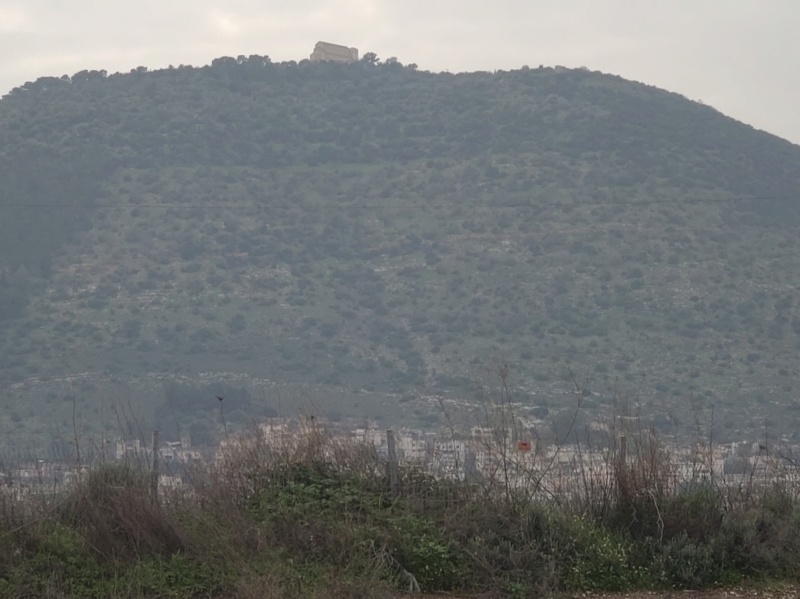
Mount Tabor is a mountain located in the Lower Galilee region of northern Israel. It is a significant site in Christianity as it is believed to be the place where Jesus Christ's transfiguration took place, as described in the New Testament.
According to the Bible, Jesus took Peter, James, and John up a high mountain, where he was transfigured before them. His face shone like the sun, and his clothes became dazzling white. Moses and Elijah then appeared and talked with Jesus. Peter, overwhelmed by the experience, suggested building three shelters for Jesus, Moses, and Elijah. A voice from a cloud then declared, "This is my Son, whom I love; with him I am well pleased. Listen to him!"
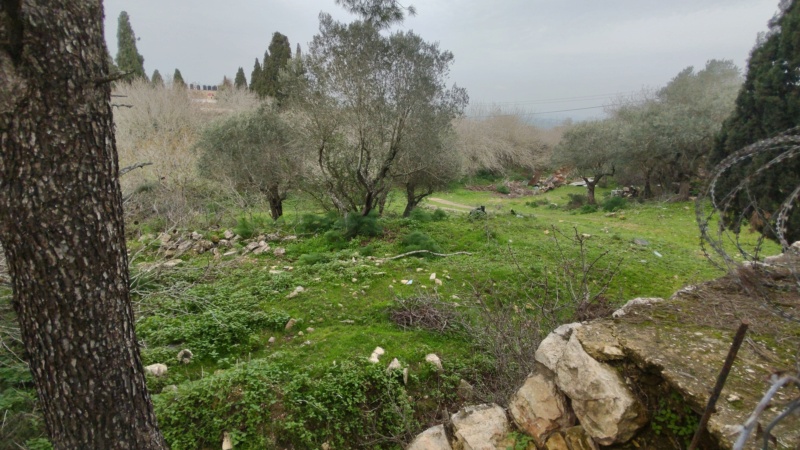
The precise location of the Mount of Transfiguration is not mentioned in the Bible, but Mount Tabor has been widely accepted as the traditional site of the event. In the 4th century, Christian pilgrims began visiting the site and by the 6th century, a church had been built on the summit to commemorate the transfiguration.
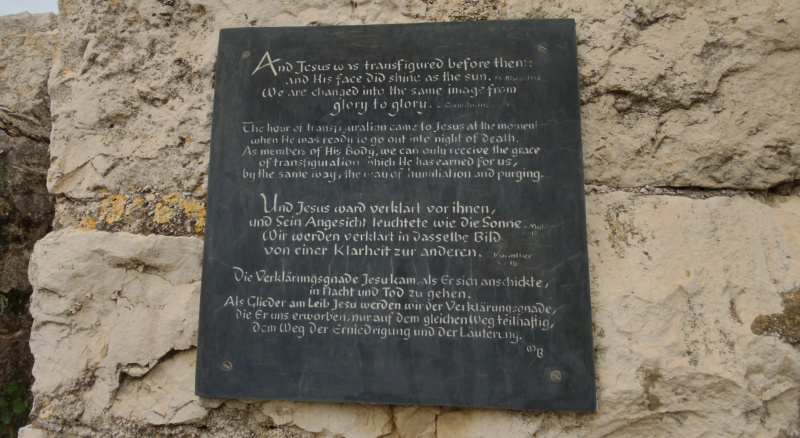
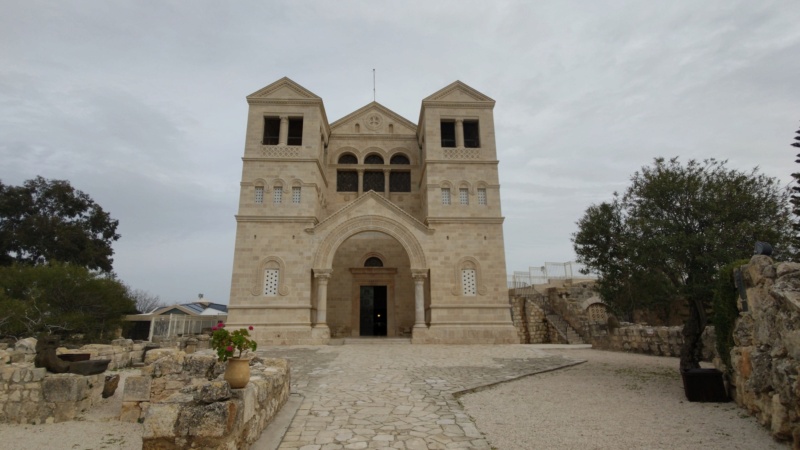
Today, the Church of the Transfiguration stands on the summit of Mount Tabor. It is a prominent landmark and a popular destination for pilgrims and tourists. The church has been rebuilt several times over the centuries, but it retains elements of the original Byzantine-era structure. The church is adorned with stunning mosaics and frescoes depicting scenes from the Bible, including the Transfiguration.
Mount Tabor is also significant in other religious traditions. In Judaism, it is believed to be the site of the battle between the Israelites led by Deborah and Barak, and the Canaanite army led by Sisera. In Islam, it is believed to be the site of the tomb of Prophet Dhul-Kifl.
Multiple Gospel accounts: The Transfiguration is described in all three of the Synoptic Gospels (Matthew 17, Mark 9, and Luke 9), as well as in the Second Epistle of Peter (2 Peter 1:16-18). The fact that multiple sources attest to the event increases the likelihood of its historical authenticity.
Eyewitness testimony: The fact that the event is said to have been witnessed by three of Jesus' disciples (Peter, James, and John) adds credibility to the account. In particular, the Gospel of Mark specifies that Jesus took only these three disciples with him, which suggests that the event was not fabricated.
Consistency with other events: The Transfiguration is consistent with other events and teachings in the Gospels, such as Jesus' prediction of his death and resurrection (Matthew 16:21), his identification with Moses and Elijah as figures of Jewish prophetic tradition, and the bright, dazzling appearance of angels in other Gospel accounts.
No apparent theological motive: There does not appear to be any clear theological motive for inventing the Transfiguration. Unlike other events in the Gospels that might be seen as attempts to establish Jesus' divinity or to fit him into existing prophecies, the Transfiguration does not serve an obvious theological purpose. This suggests that it is more likely to have been a genuine historical event.
Early Christian tradition: The Transfiguration has been celebrated as a feast day in the Christian tradition since at least the fourth century, which indicates that it was seen as an important event from an early period of Christian history. This tradition suggests that the event was believed to be historical from the earliest days of the Christian community.
Archaeological findings confirm the historicity of the events described in Matthew 17Archaeological findings can provide useful context to help understand the historical and cultural background of the period in which the event was said to have taken place. However, in the case of the Transfiguration, there is no physical evidence that can confirm or deny its occurrence. Therefore, scholars and historians must rely on textual analysis, literary criticism, and theological interpretation of the Bible to assess the historicity of the Transfiguration. Like with other biblical events, the historicity of the Transfiguration is a subject of debate among scholars and historians, with varying interpretations of the event's meaning and historical accuracy.
Examples of undesigned coincidences between Matthew 17 and the other gospels, and New Testament textsMatthew 17:1 and Mark 9:2: In Matthew 17:1, Jesus takes Peter, James, and John up a high mountain, and is transfigured before them. In Mark 9:2, the same event is described, but with the additional detail that Jesus took the three disciples "up a high mountain by themselves." This coincidence suggests that the detail of the disciples being alone with Jesus was a genuine aspect of the event.
Matthew 17:4 and Luke 9:33: In Matthew 17:4, Peter offers to build three tents, or tabernacles, for Jesus, Moses, and Elijah. In Luke 9:33, the same event is described, but with the detail that Peter did not know what he was saying when he made the offer. This coincidence suggests that the detail of Peter's ignorance was not added later, but was an authentic part of the event.
Matthew 17:5 and 2 Peter 1:17: In Matthew 17:5, a voice from heaven says, "This is my Son, whom I love; with him I am well pleased. Listen to him!" In 2 Peter 1:17, Peter refers to the voice from heaven as having come to him and the other disciples on the holy mountain. This coincidence suggests that Peter was present at the Transfiguration and heard the voice from heaven himself.
Matthew 17:9 and Mark 9:9-10: In Matthew 17:9, Jesus tells the three disciples not to tell anyone what they have seen until he has risen from the dead. In Mark 9:9-10, the same event is described, but with the additional detail that the disciples asked Jesus about the meaning of rising from the dead. This coincidence suggests that the instruction to keep quiet about the event was genuine, and that the disciples were curious about what Jesus meant by "rising from the dead."
Matthew 17:24-27 and 1 Corinthians 9:11: In Matthew 17:24-27, Peter is asked whether Jesus pays the temple tax, and he responds that he does. Jesus then tells Peter to go fishing, and he will find a coin in the fish's mouth to pay the tax. In 1 Corinthians 9:11, Paul describes how he and other Christian workers should be supported, and uses the example of those who serve in the temple as a model. This coincidence suggests that the temple tax was a real issue for Jewish believers, and that it was also an issue for early Christian leaders such as Paul.
What lines of evidence corroborate the authenticity of the events described in Matthew 18?Matthew 18 describes several events, including Jesus teaching his disciples about humility and forgiveness, the parable of the lost sheep, and the process of church discipline. While it is challenging to definitively prove the authenticity of the events described in Matthew 18, there are several lines of evidence that can provide support for their historical accuracy.
Internal consistency: The events described in Matthew 18 are consistent with other passages in the New Testament, as well as with the historical and cultural context of first-century Palestine. The teachings on humility and forgiveness are consistent with Jesus' overall message, as are the parables of the lost sheep and the unforgiving servant. The process of church discipline described in Matthew 18 also aligns with early Christian practices.
Manuscript evidence: The manuscript evidence for the Gospel of Matthew is extensive, with numerous early copies of the text that provide a strong basis for its authenticity. While the original manuscripts are no longer extant, the oldest copies of Matthew's Gospel date back to the second century, indicating that the text has a long and continuous transmission history.
Eyewitness testimony: The events described in Matthew 18 are said to have taken place in the presence of Jesus' disciples, who later became leaders of the early Christian community. The inclusion of these events in the Gospel of Matthew suggests that they were considered important by the early Christian community and may have been based on eyewitness testimony.
Archaeological findings confirm the historicity of the events described in Matthew 18There are no specific archaeological findings that directly confirm the historicity of the events described in Matthew 18. However, the teachings and parables described in Matthew 18 are consistent with the historical and cultural context of first-century Judaism and early Christianity, as well as with other historical and literary sources from the time period.
For example, confronting a fellow believer in private (as described in Matthew 18:15-17) was a common practice in Jewish communities of the time, and the reference to binding and losing (Matthew 18:18) was a known rabbinic practice. The parable of the unforgiving servant is also consistent with Jewish ethical and moral traditions of the time.
Additionally, the teachings and parables in Matthew 18 are attested to in multiple sources, including the other Synoptic Gospels (Mark and Luke), as well as in the Gospel of Thomas, an early Christian text discovered in the mid-20th century. This suggests that the teachings and parables were known and accepted across different Christian communities and were not a later invention.
Examples of undesigned coincidences between Matthew 18 and the other gospels, and New Testament textsMatthew 18:15-17 describes the process of church discipline for those who sin against another believer. In 1 Corinthians 5:1-5, Paul also discusses the need for church discipline in cases of serious sin, indicating that this was a recognized practice in the early Christian community.
In Matthew 18:21-22, Peter asks Jesus how many times he should forgive a brother who sins against him, suggesting seven times as a possible limit. In Luke 17:3-4, Jesus teaches about the need to forgive others, and the disciples respond by saying, "Increase our faith." This suggests that the disciples recognized the difficulty of forgiving others and understood that it required a strong faith.
In Matthew 18:10, Jesus speaks about "these little ones who believe in me." In Mark 9:42, Jesus warns against causing "one of these little ones who believe in me to stumble," indicating that both Matthew and Mark were familiar with this teaching of Jesus and that it was important to him.
In Matthew 18:23-35, Jesus tells the parable of the unforgiving servant, who is forgiven a large debt by his master but then refuses to forgive a smaller debt owed to him by a fellow servant. In Colossians 3:13, Paul urges believers to forgive one another as the Lord has forgiven them, suggesting that this parable was an important teaching in the early Christian community.
What lines of evidence corroborate the authenticity of the events described in Matthew 19?Consistency with other gospel accounts: Many of the events and teachings described in Matthew 19 are also found in the other gospels, including Mark and Luke. The fact that multiple sources corroborate these events adds credibility to their authenticity.
Historical context: The events and teachings described in Matthew 19 are consistent with the historical context of first-century Palestine. For example, divorce was a common issue in Jewish society at the time, and Jesus' teachings on the subject reflect the prevailing attitudes and beliefs of his time.
Eyewitness testimony: It is widely believed that Matthew was an eyewitness to many of the events he describes in his gospel. This firsthand testimony adds credibility to the authenticity of the events he records.
Internal consistency: The events and teachings described in Matthew 19 are consistent with the larger themes and messages of Jesus' ministry as recorded in the rest of the New Testament. This internal consistency suggests that the events in Matthew 19 are not fabricated but are instead part of a larger, cohesive narrative.
Cultural and linguistic details: The language and cultural details included in Matthew 19 are consistent with the time and place in which the events occurred. For example, the use of specific Aramaic and Hebrew phrases suggests that Matthew was familiar with the local language and customs.
Archaeological findings that confirm the historicity of the events described in Matthew 19The mention of divorce and remarriage in Matthew 19:3-9 reflects the debate and controversy around this topic in Jewish society during the time of Jesus. The practice of divorce was allowed under Jewish law, but there were different opinions among Jewish leaders about the reasons and conditions for divorce. This is confirmed by archaeological findings of Jewish divorce documents and legal texts from the Second Temple period.
The mention of eunuchs in Matthew 19:12 reflects the existence of castration practices in the ancient Near East, which were used for a variety of purposes, including as a means of securing a position in the royal court or temple service. This is confirmed by archaeological findings of eunuch burials and representations of eunuchs in art and literature from various ancient cultures.
The mention of children being brought to Jesus for blessings in Matthew 19:13-15 reflects the importance of children in Jewish culture, and the practice of parents seeking the blessing and protection of religious leaders for their children. This is confirmed by archaeological findings of inscriptions and amulets designed to protect children, as well as representations of children in art and literature from the ancient Near East.
The mention of a rich young man seeking eternal life in Matthew 19:16-22 reflects the values and aspirations of wealthy individuals in Jewish and Greco-Roman society, who often sought spiritual fulfillment and immortality through acts of piety and charity. This is confirmed by archaeological findings of tombs, inscriptions, and other artifacts that reflect the wealth and status of individuals in these cultures, as well as literary and philosophical texts that address the themes of wealth, virtue, and the afterlife.
Examples of undesigned coincidences between Matthew 19 and the other gospels, and New Testament textsIn Matthew 19:13-15, Jesus blesses children who are brought to him. Mark 10:13-16 and Luke 18:15-17 also describe this event. Matthew does not explain who brought the children to Jesus, but Mark and Luke both mention that it was the parents who brought them. This detail in Mark and Luke's accounts helps explain why the disciples rebuked those who brought the children to Jesus in Matthew's account.
In Matthew 19:16-30, Jesus has a conversation with a rich young man about eternal life. Mark 10:17-31 and Luke 18:18-30 also record this event. Matthew mentions that the young man asked Jesus, "What good thing must I do to get eternal life?" (19:16), but he does not explain why the young man asked this particular question. Luke's account, however, mentions that the young man was a ruler (18:18), which helps explain why he was concerned about doing good works to gain eternal life.
In Matthew 19:23-24, Jesus tells his disciples that it is easier for a camel to go through the eye of a needle than for a rich person to enter the kingdom of God. Mark 10:23-25 and Luke 18:24-25 also record this statement. Matthew does not explain why Jesus used the analogy of a camel and a needle, but Mark and Luke both mention that the disciples were astonished at Jesus' statement (Mark 10:24; Luke 18:25), suggesting that this was a surprising and memorable analogy.
In Matthew 19:27-29, Peter asks Jesus what the disciples will receive for following him. Jesus responds by promising them rewards in the age to come. Mark 10:28-31 and Luke 18:28-30 also record this conversation. Matthew does not explain why Peter asked this particular question, but Mark and Luke both mention that Peter and the other disciples had left everything to follow Jesus (Mark 10:28; Luke 18:28), which helps explain their concern about their future reward.
Evidence that corroborates the authenticity and historicity of the events described in Matthew 20Matthew 20 describes several events, including Jesus' prediction of his death and resurrection, the request of James and John to sit at Jesus' right and left hand in his kingdom, and the healing of two blind men. Here are some pieces of evidence that support the authenticity and historicity of these events:
Early manuscript evidence: The Gospel of Matthew is one of the four canonical gospels, which were widely circulated and recognized as authoritative by the early Christian community. There are many early manuscripts of Matthew that have been discovered, some dating as far back as the second century. This suggests that the events described in Matthew were considered important and were being preserved and passed down through the generations.
Corroboration from other sources: Many of the events described in Matthew are also mentioned in other ancient sources, such as the Gospels of Mark, Luke, and John, as well as the writings of the early Church Fathers. This cross-referencing lends credibility to the historical accuracy of the events.
Eyewitness testimony: Matthew, one of the twelve apostles, is traditionally considered to be the author of the Gospel that bears his name. As an eyewitness to many of the events he describes, his testimony adds to the authenticity of the events.
Fulfillment of prophecy: Matthew 20 includes several references to Old Testament prophecies that were fulfilled by Jesus. The fulfillment of these prophecies adds weight to the claim that Jesus was the Messiah and that the events described in Matthew are historically accurate.
Archaeological findings that confirm the historicity of the events described in Matthew 20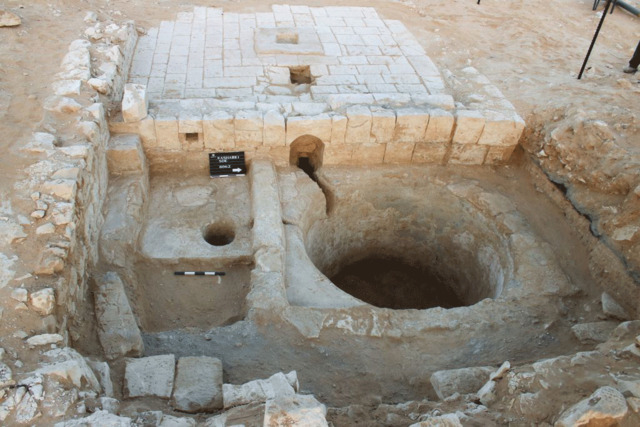
Archaeologists in Israel have discovered a 1,600-year-old wine press within a 4th century Byzantine structure. The discovery proves that agriculture in arid areas was a common practice centuries ago. The discovery was made at excavations at the Ramat Negev region, where a team of Israel Antiquities Authority were exploring a site with a large Byzantine-era structure.2
 Vineyards:
Vineyards: The parable of the laborers in the vineyard in Matthew 20:1-16 takes place in a vineyard. The presence of vineyards in first-century Palestine is well-attested in the archaeological record. Vineyards were a major source of income for many landowners in the region, and wine was an important commodity for both Jewish and Roman consumers.
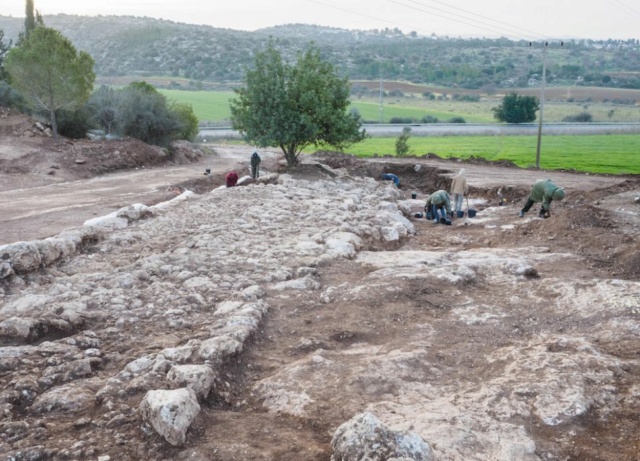
Laura Geggel (2017): Archaeologists found a 2,000-year-old Roman road during a routine survey of a construction site in modern-day Israel. The road is wide — about 20 feet (6 meters) from edge to edge — and roughly 1 mile (1.5 kilometers) long. The stone-paved road is near Israel's Highway 375, and runs near the Israel National Trail. 3
Roman roads: In Matthew 20:29-34, Jesus heals two blind men as he is leaving Jericho. The presence of a Roman road near Jericho is attested in the archaeological record. The road connected Jerusalem to Jericho and the Jordan Valley and was an important trade route in the region.
Begging: The fact that the two blind men in Matthew 20:29-34 are described as begging is consistent with the archaeological record of first-century Palestine. Begging was a common occupation for the blind and disabled, who were unable to work in other professions. It is likely that the blind men would have been situated along the road to Jericho, where they would have been able to ask for alms from passing travelers.
Use of the term "Son of David": In Matthew 20:30, the two blind men address Jesus as "Son of David." This is consistent with the Jewish belief that the Messiah would be a descendant of King David. The use of this term in the text reflects the cultural and religious context of first-century Judaism.
Examples of undesigned coincidences between Matthew 20 and the other gospels, and New Testament textsThe mother of James and John: In Matthew 20:20-21, the mother of James and John asks Jesus to grant her sons seats at his right and left in his kingdom. In Mark 10:35-37, it is James and John themselves who make this request. This difference makes sense if the mother was the spokesperson for her sons and Matthew simply did not mention that detail.
The two blind men: In Matthew 20:29-34, Jesus heals two blind men outside of Jericho. Mark 10:46-52 and Luke 18:35-43 also describe this event, but they mention only one blind man. This is easily explained if one of the blind men was more prominent or vocal than the other and therefore more noteworthy to one gospel writer.
The triumphal entry: In Matthew 21:1-11, Jesus enters Jerusalem on a donkey while the crowds shout, "Hosanna to the Son of David!" John 12:12-15 also describes this event, but it adds that the people waved palm branches. This detail is not mentioned in Matthew, but it is consistent with the custom of the time.
The fig tree: In Matthew 21:18-22, Jesus curses a fig tree and it withers. Mark 11:12-14 and 20-24 also describe this event, but they provide more detail about Jesus' hunger and the disciples' reaction. This difference can be explained by the fact that Mark is more interested in the disciples' reaction while Matthew focuses on the fig tree as a symbol of Israel.
The chief priests and elders: In Matthew 21:23-27, the chief priests and elders ask Jesus by what authority he is teaching and performing miracles. Mark 11:27-33 and Luke 20:1-8 also describe this event, but they mention that the question was prompted by Jesus' cleansing of the temple. This detail is not mentioned in Matthew, but it makes sense in light of the context.
1. Steve Law: HEROD’S DANCE FLOOR THAT DOOMED JOHN THE BAPTIST FOUND February 12, 2021
1. The Oldest and Most Important Complete Manuscript of the Mishna
2. Ancient wine press found in the desert in Israel
3. Laura Geggel: 2,000-year-old Roman road and coins discovered in Israel March 08, 2017
